
Installation Instructions
Options
Choose your actuator length to begin:
Please make a selection to unlock the installation steps.
Next →Parts List
Actuator Mounting Parts


Wall Mount
×4
Bi-directional Joint
×4Linear Guide Parts
Only applicable for 12"+ actuators

Wall Mount Spacer
×4
Linear Rail Mount Pair
×1
Linear Rail Carriage
×2
Linear Rail
×2Frame Parts

Short-Beam Tubes
×4
Long-Beam Tubes
×2
Noise Dampeners
×12
SLIC Pins
×12
Large Glide Tape
×6
Small Glide Tape
×6
U-Bracket
×2Electronics & Wiring Parts

Power Board
×1
Main Controller
×1
Controller Mount - Frame
×1 (if ordered)
Controller Mount - Wall
×1 (if ordered)
Long Power Supply Cable
×1
Short Power Supply Cable
×1
Large Coiled Cable
×1
Y-Cable
×2
Small Coiled Cable
×3
Controller Cable
×1 or 2
Zip Tie Anchors
×10
Wiring Conduit
×1
Spade Connectors
×2
Velcro Cable Ties
×6Hardware

Wall Bracket Screws
×16
Wall Mount Bolts
×8
Set Screws
×6-10Linear Guide Hardware
Only applicable for 12"+ actuators

Linear Rail Mount Screws
×8
Linear Rail Screws
×2
Linear Rail Carriage Screws
×2Section 1: Actuator Mounting

This section will cover installing the wall mounts.
The wall mounts will locate the corners of the frame as shown in the overview image below.
Determining Mounting Location
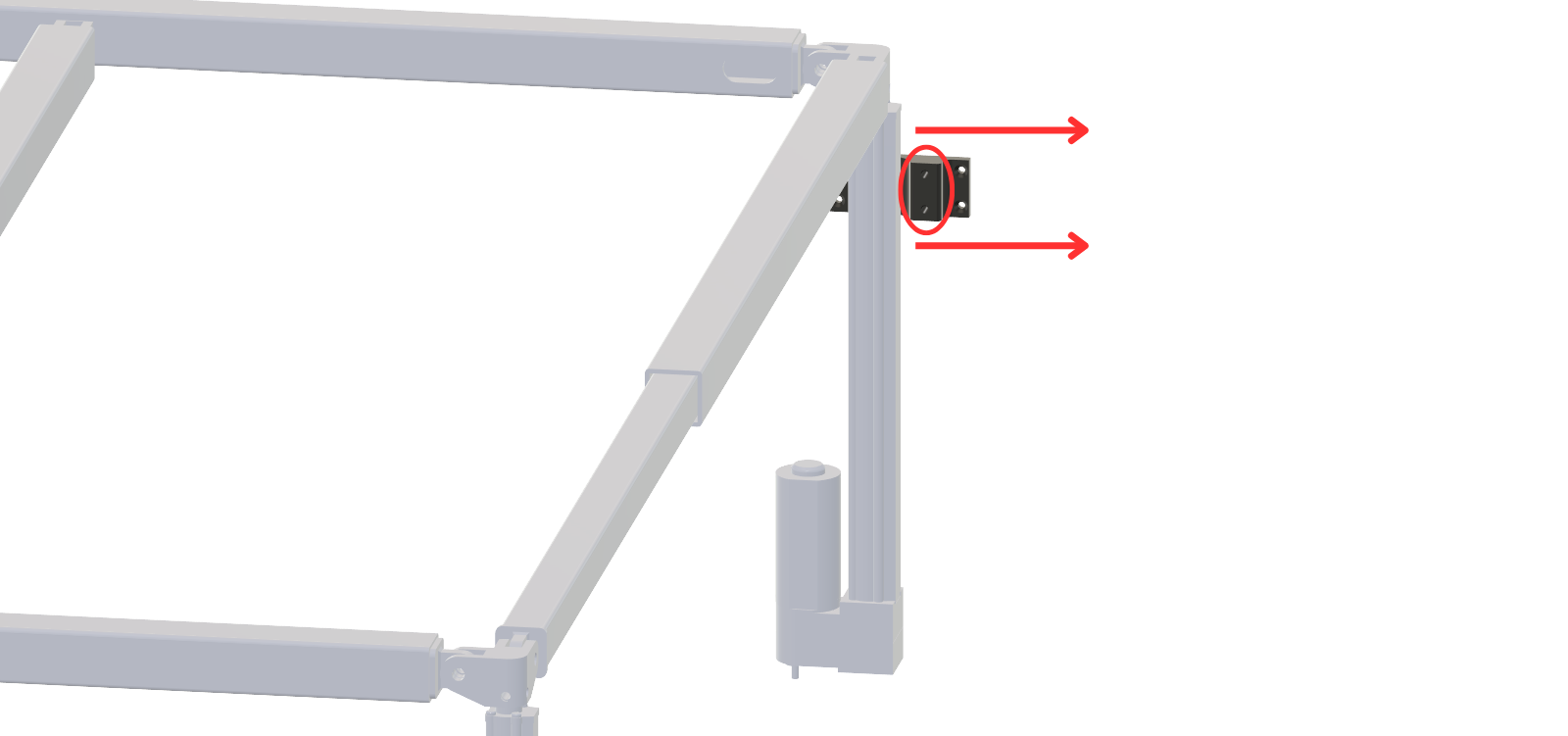
Position wall mounts with threaded holes facing away from the center of the bed.
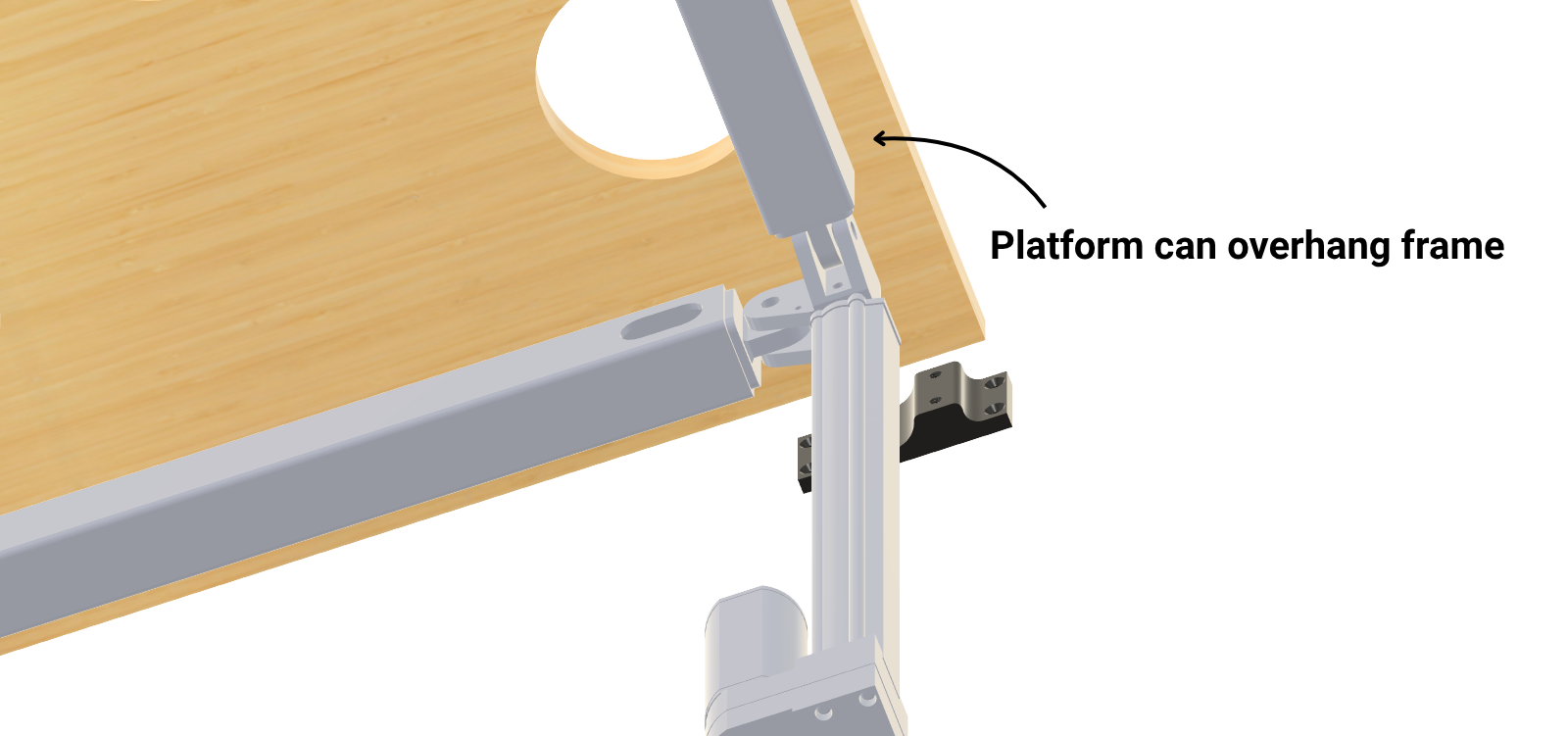
If uncertain, err on the side of placing wall mounts slightly closer together; the platform can overhang later.
The wall mounts should be installed as square as possible relative to each other, but small misalignments are not an issue due to the flexibility of the frame design.
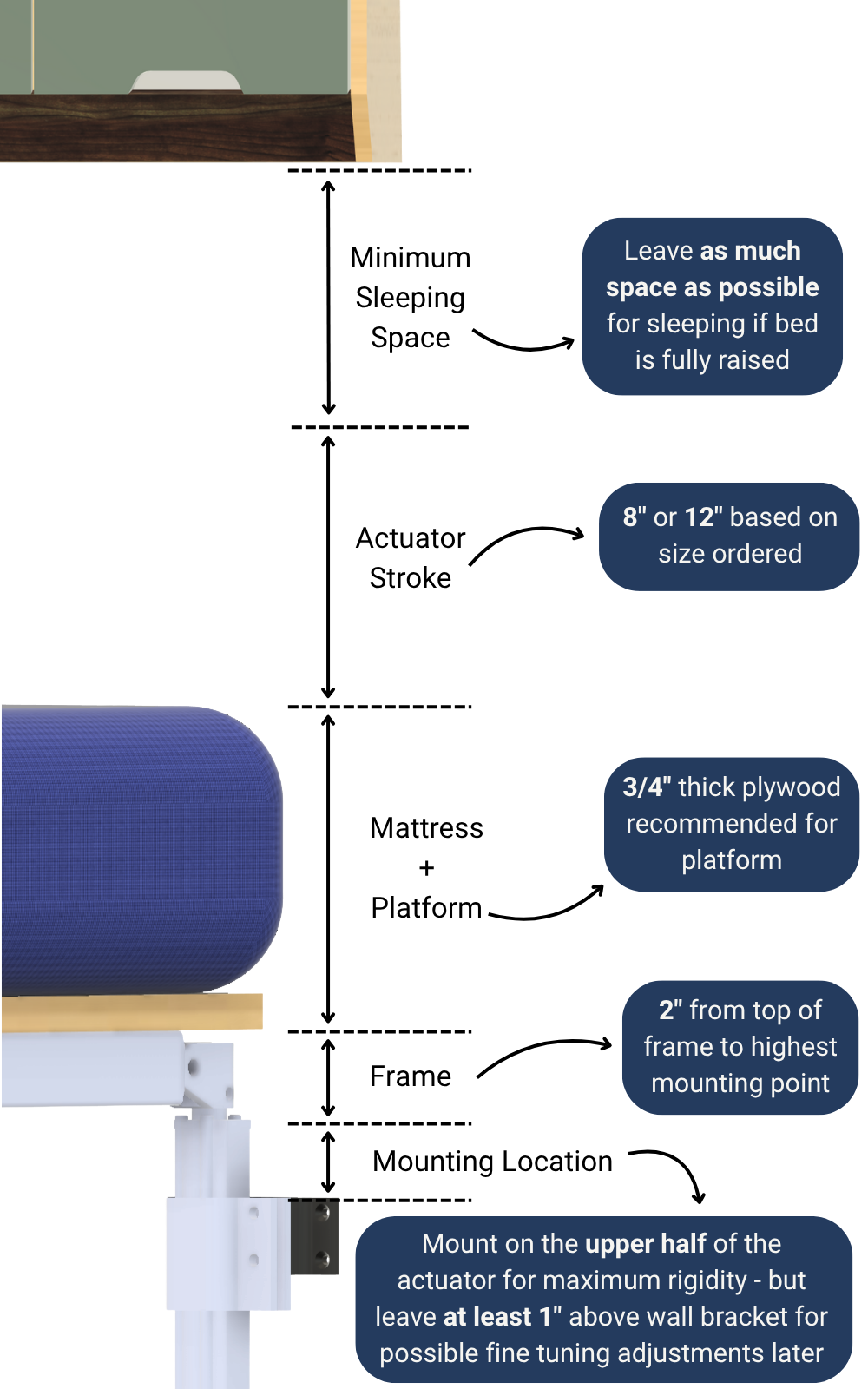
Ensure there is enough space above the wall mount to allow for the frame, platform, mattress, actuator stroke length, and additional space for sleeping when the bed is fully raised.
See notes in illustration for more details.
You can fine-tune actuator height later by sliding them up or down within the brackets.
Securing Brackets & Actuators
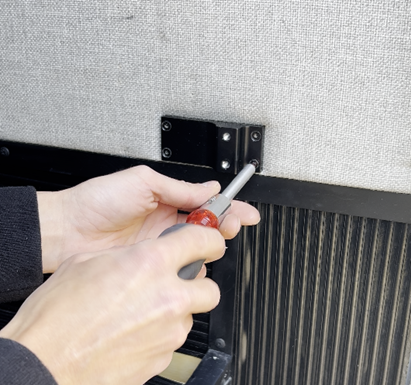
Secure all four wall mounts in the locations determined above with wood screws into a solid furring strip (or equivalent solid structure).
The wall brackets must be mounted into a solid structure and secured tightly. If the
brackets are not rigid, the actuators may flex or feel loose.
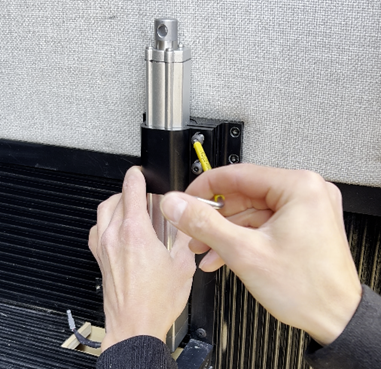
Secure all four actuators to the wall brackets using 1/4-20 x 1" button head cap screws.
Fully tighten.
Securing Brackets & Actuators

Secure all four wall mounts in the locations determined above with wood screws into a solid furring strip (or equivalent solid structure).
Make sure to place a wall mount spacer behind the wall mount for installing the linear rail guides in the next section.
Loosely installing the bottom two screws of the wall mount first, then sliding the wall mount spacer into place is the simplest way to install the wall mount and spacer.
The wall brackets must be mounted into a solid structure and secured tightly. If the
brackets are not rigid, the actuators may flex or feel loose.

Secure all four actuators to the wall brackets using 1/4-20 x 1" button head cap screws.
Fully tighten.
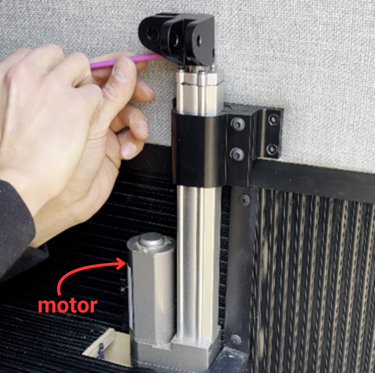
Place a bi-directional joint on top of each actuator with the pivot joint fins facing the other actuators. Secure with a 1/4-20 x 1-4" set screw.
The set screw should be installed in line with the motor as shown in the image below (otherwise the set screw will fall into the hole in the actuating shaft).
Section 1-L: Linear Guides (for 12"+ Actuators)
Why Only Two Linear Rails If I Have Four Actuators?
Installing linear rails on just two adjacent actuators is sufficient to eliminate sway. Using only two reduces both cost and installation time.
It is highly recommended to install the linear rails on the actuators located either at the rear doors or at the front of the van, whichever is easiest to access.
Most of the lateral force applied to the frame runs lengthwise with the van. For best stability, securing the rear two actuators or the front two actuators with linear rails is optimal.
Attaching Rail Mounts
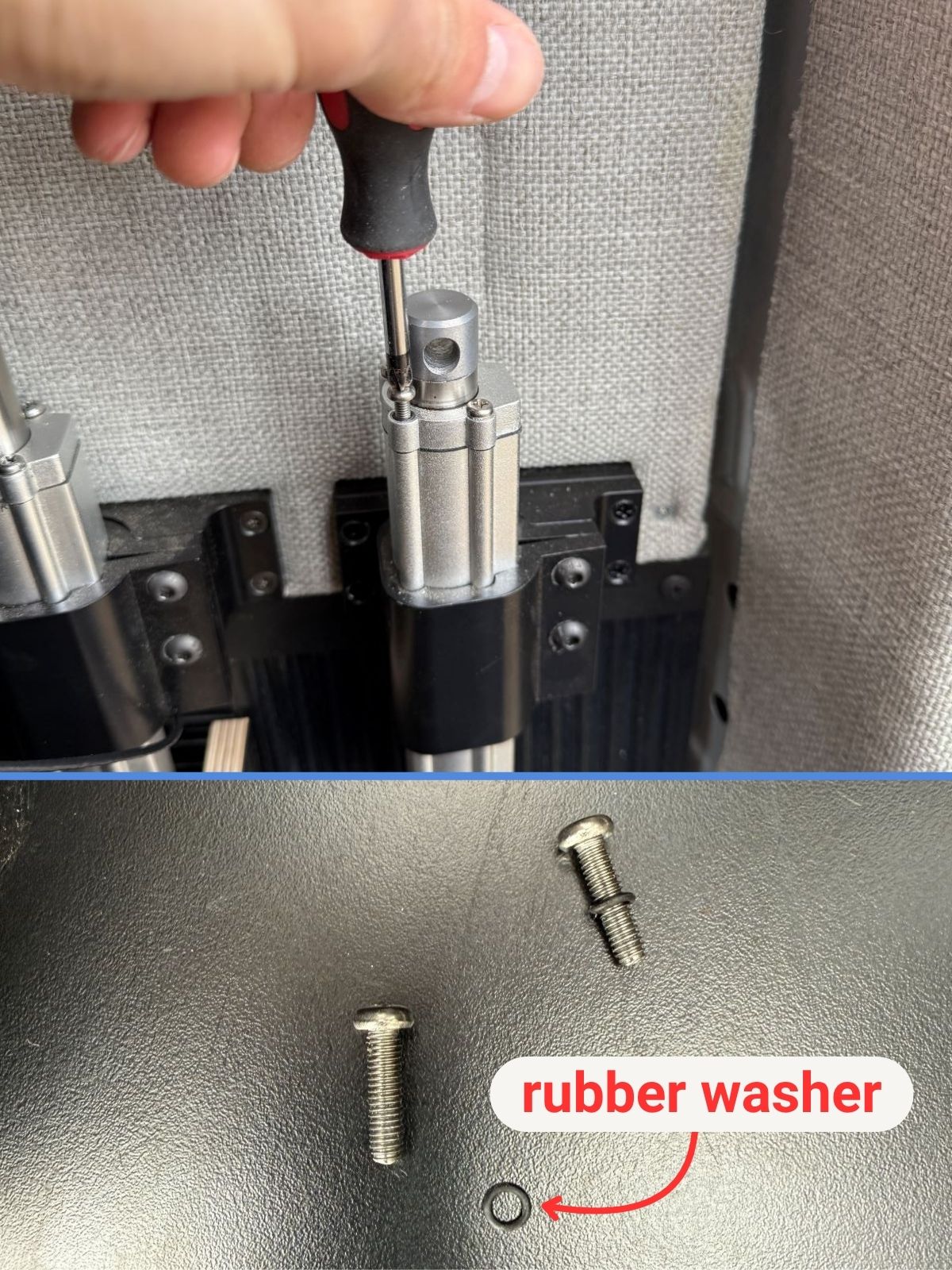
Remove the four machine screws from the top of the actuators.
Ensure you retain the rubber washers that are on each screw.
Watch out! Sometimes the rubber washers on the screws don't come out with the screws. Make sure to find each one and keep them for the next step.
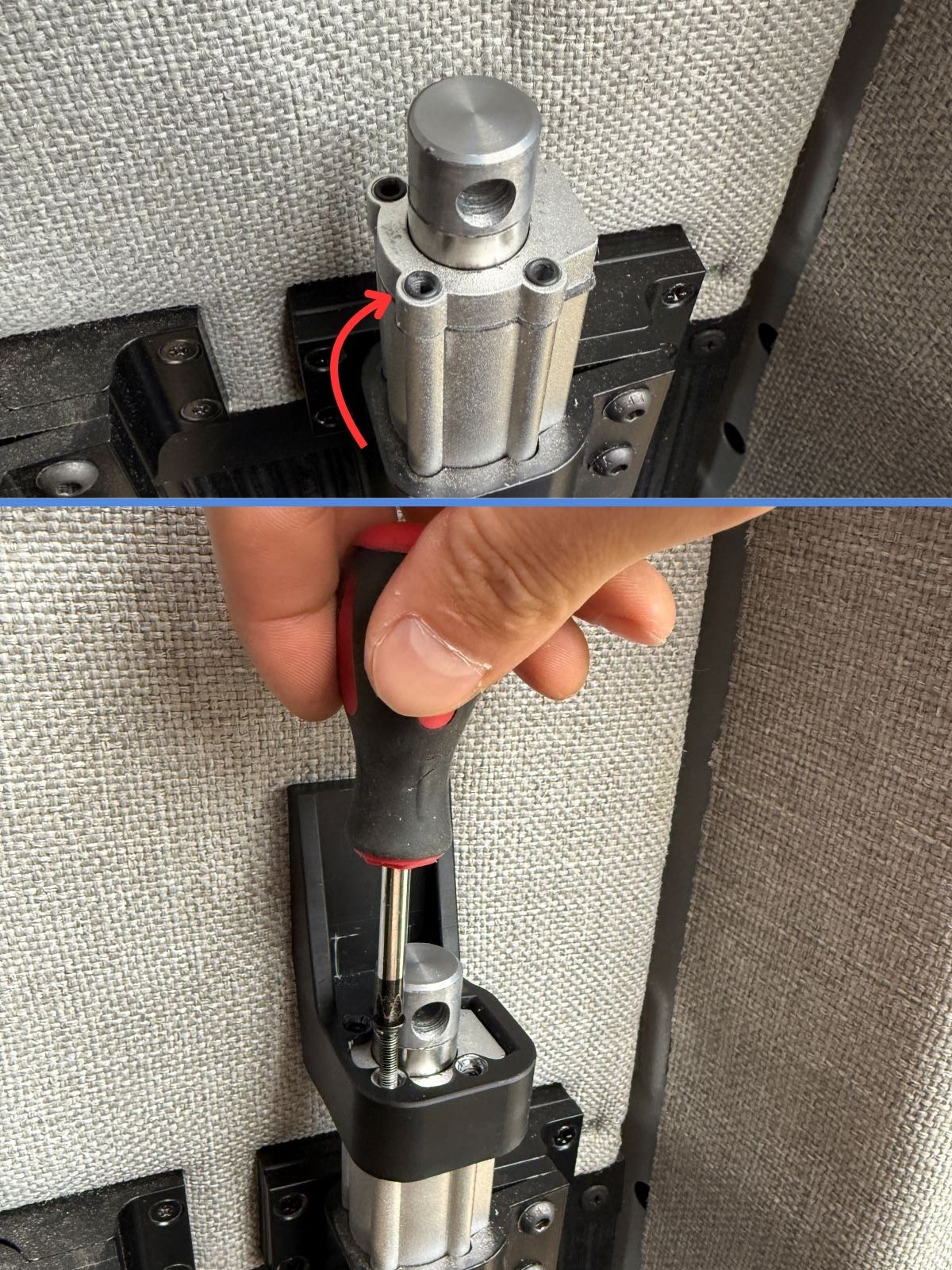
Place the rubber washers in the indents on the actuators where the machine screws were removed.
Install the linear rail mounts and secure with M4x30 flat head machine screws.
Installing Linear Rails
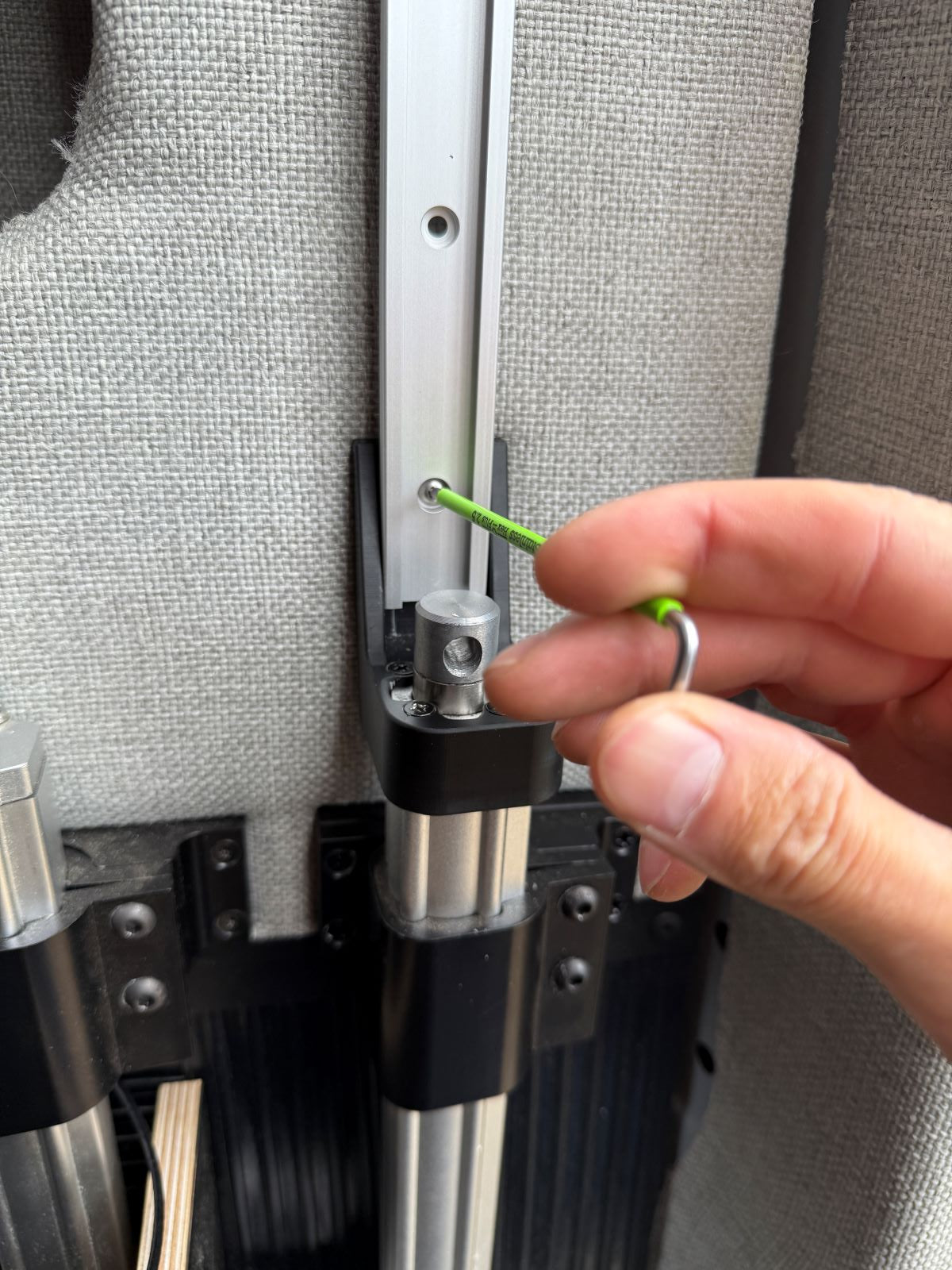
Install the linear guide rail in the linear rail mount using M4x8 button head machine screws with a 2.5mm hex key.
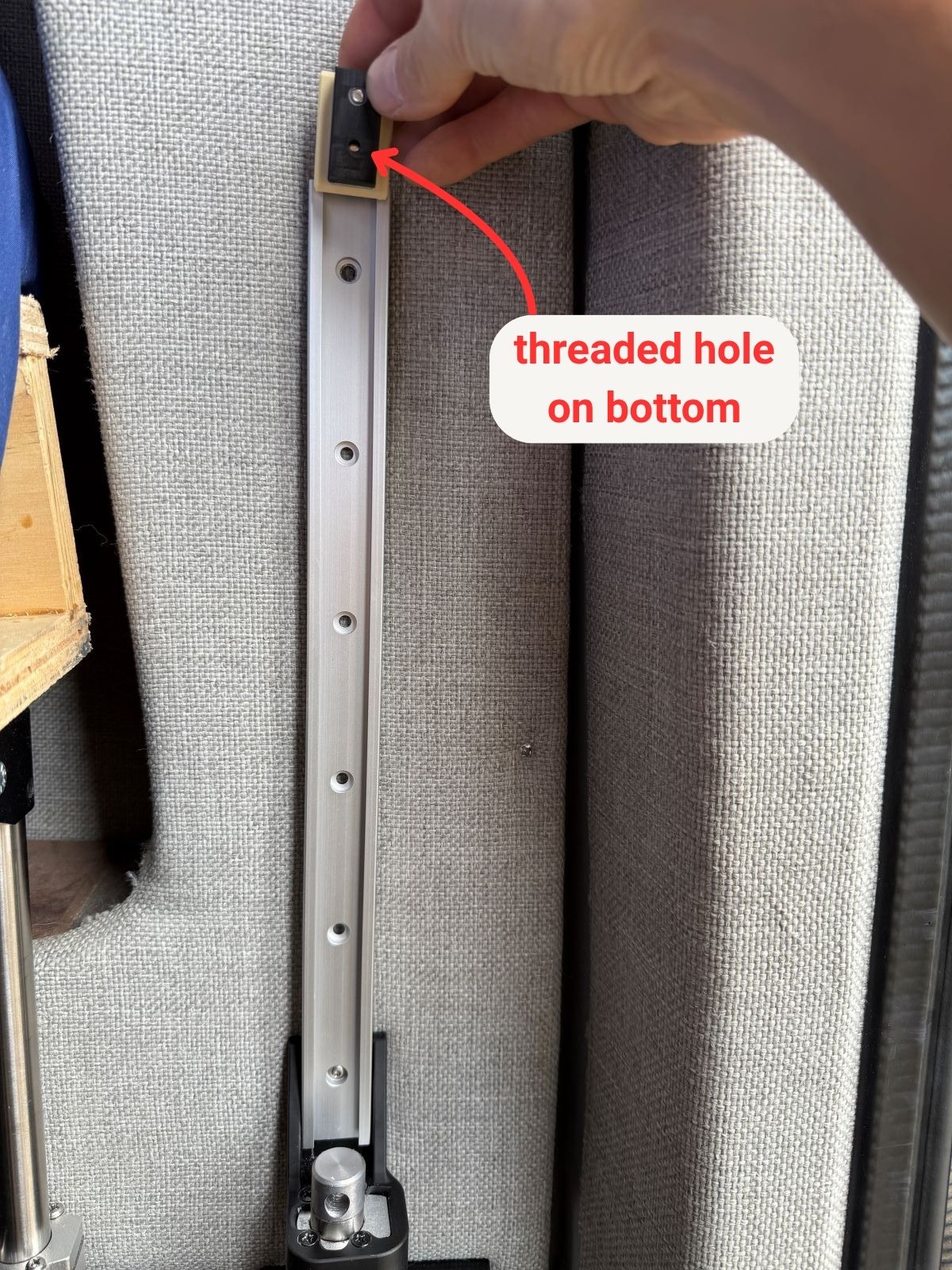
Slide the linear rail carriage in the guide rail from the top with the threaded hole at the bottom as shown in the image.
Installing Bi-Directional Joints

Place a bi-directional joint on top of each actuator with the pivot joint fins facing the other actuators. Secure with a 1/4-20 x 1/4" set screw.
The set screw should be installed in line with the motor as shown in the image below (otherwise the set screw will fall into the hole in the actuating shaft).
Connecting Carriage to Actuator
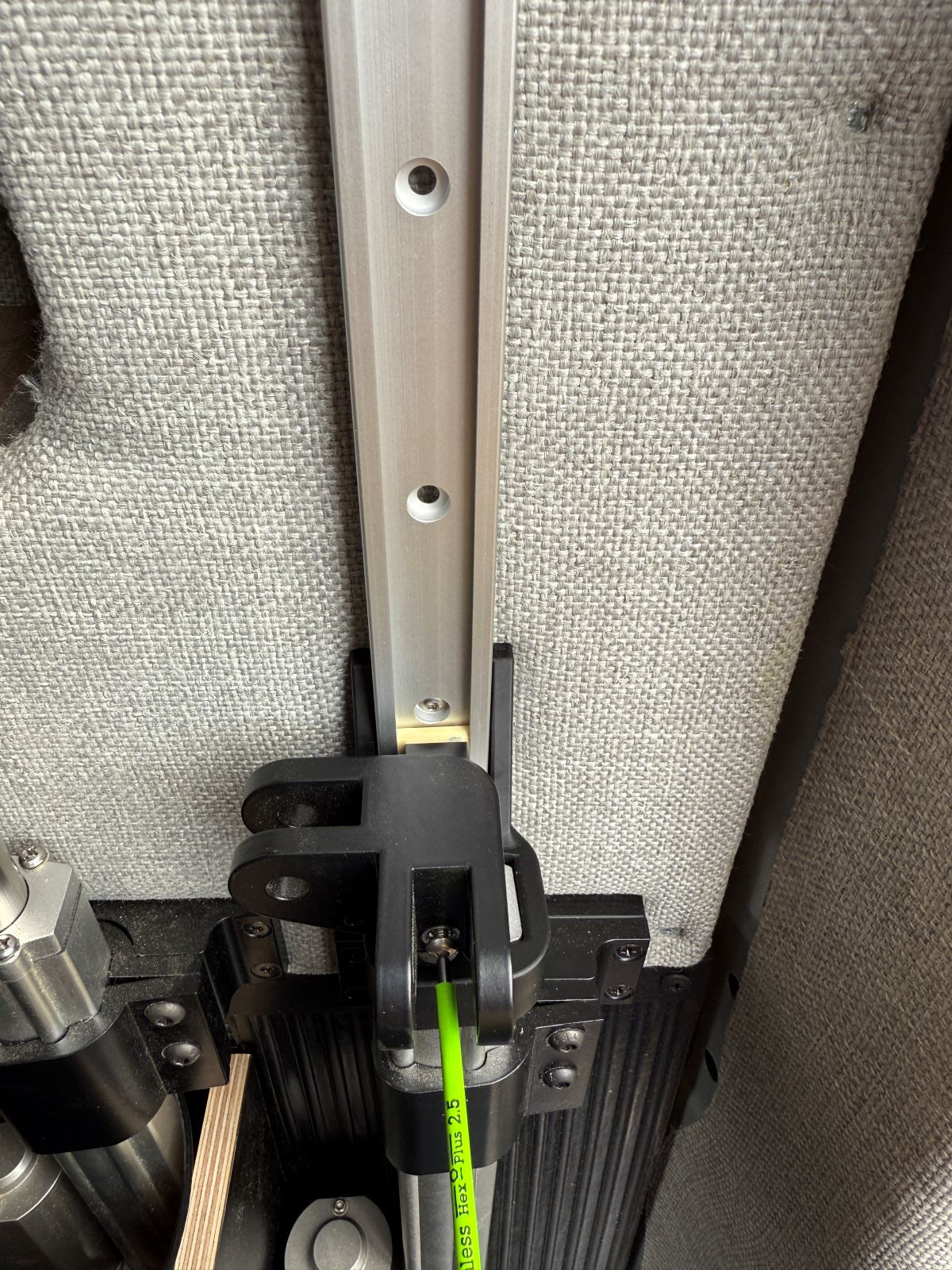
Align the hole in the bi-directional joint with the threaded hole in the linear rail carriage. Secure with a M4 x 30mm button head cap screw using a 2.5mm hex key.
Don't forget to re-tighten the set screw on the bi-directional joint.
Future Step - Securing Top Of Guide Rail
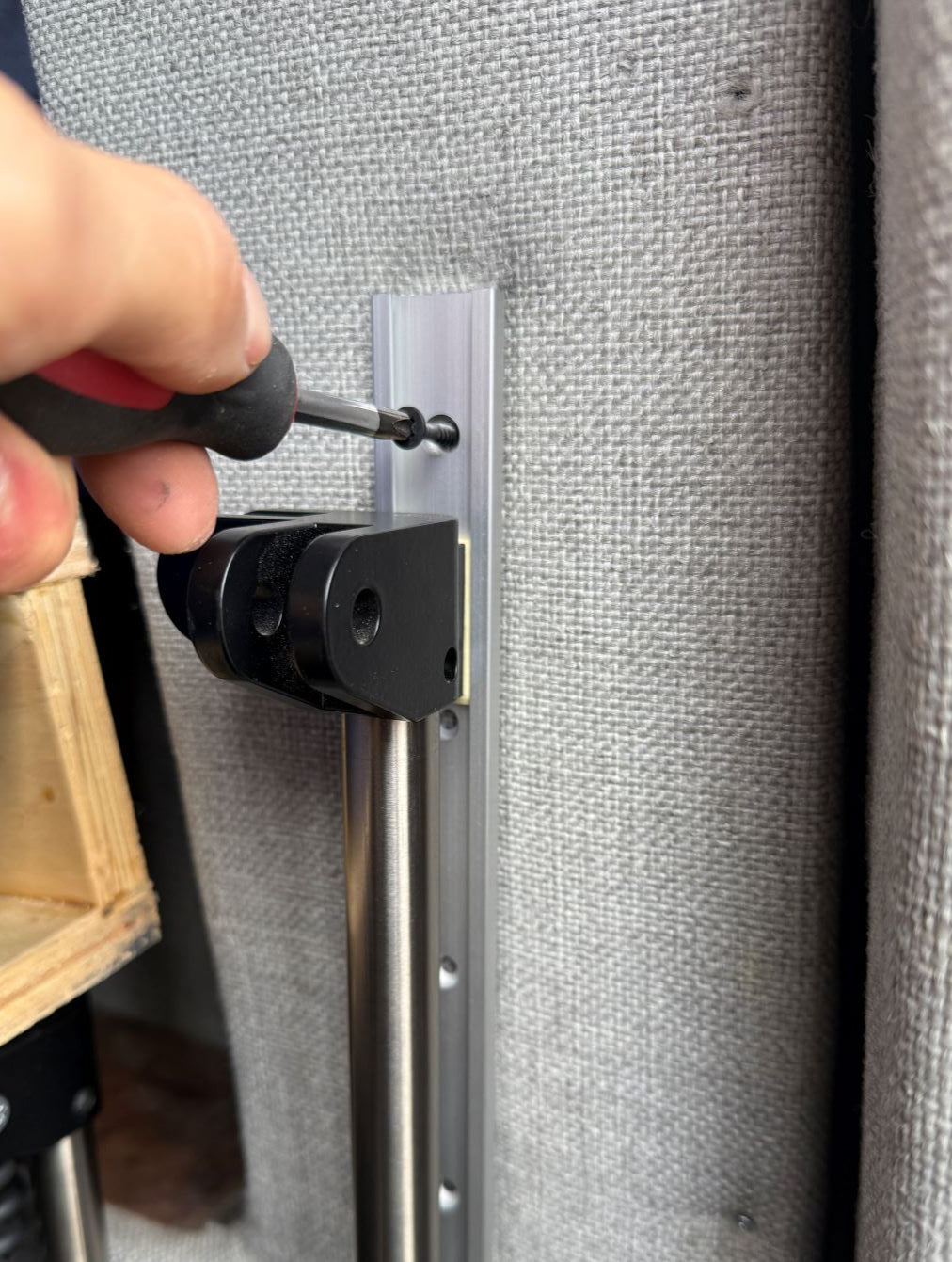
Securing the top of the rail will be completed later when the bed is powered on.
⚠️ Leave the top of the rail unsecured for now.
This step will be repeated when the bed is operational to remind you to complete it.
Section 2: Frame Assembly
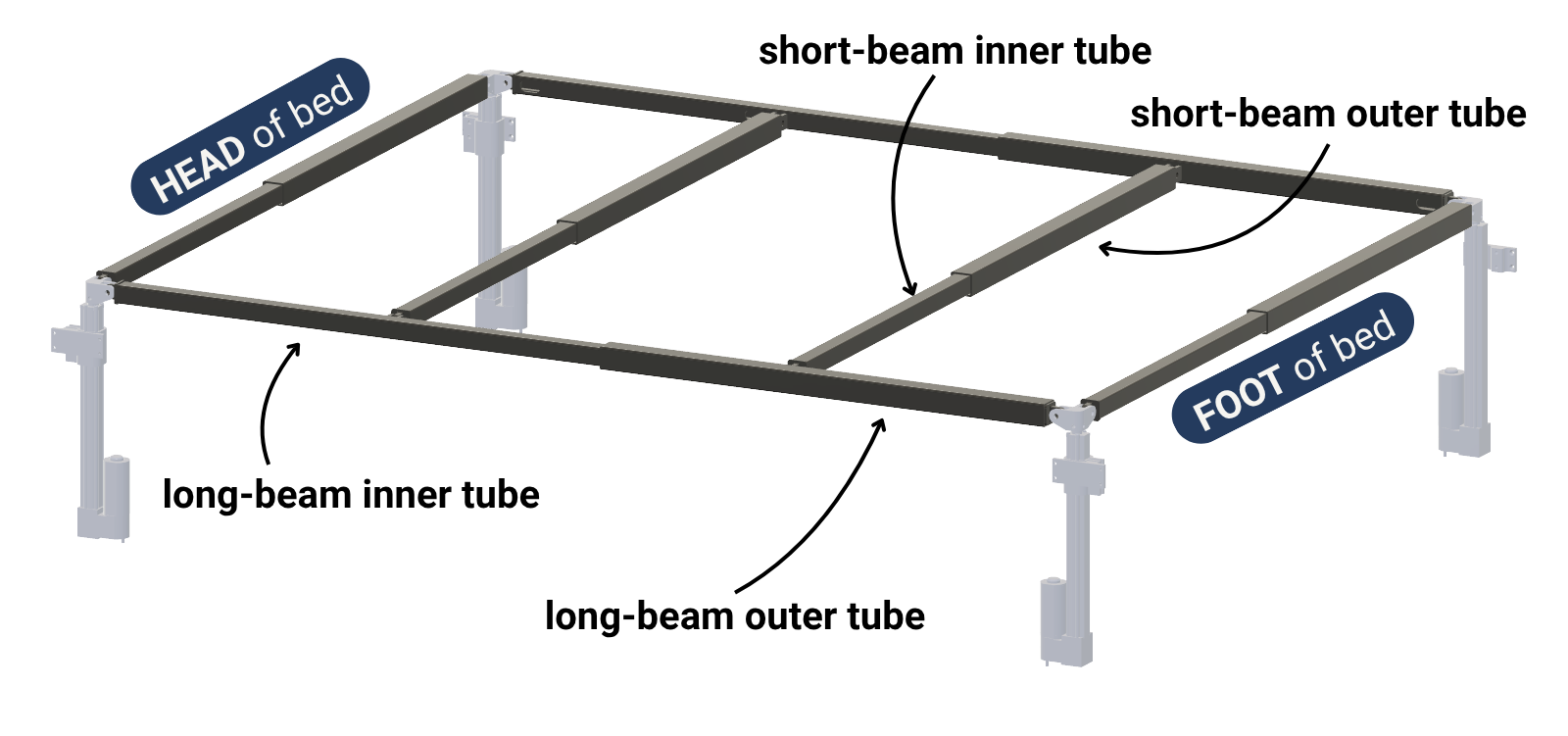
This section will cover installing the frame assemblies.
Putting Together the Tube Assemblies
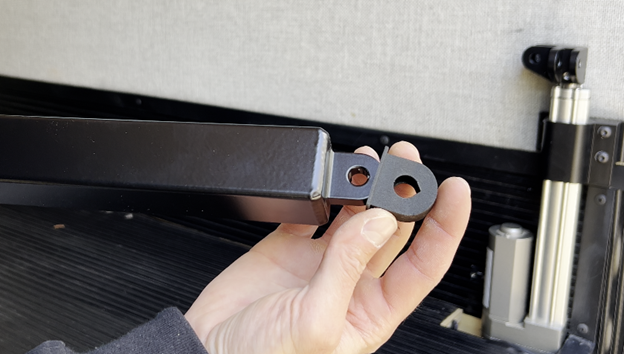
Place noise dampeners on the ends of each of the tube members.
Insert the short-beam inner tubes into the short-beam outer tubes and the long-beam inner tubes into the long-beam outer tubes.
Ensure the pivot joints on the ends of each tube assembly are oriented in the same plane (not rotated by 90 degrees).
Assembling the Frame
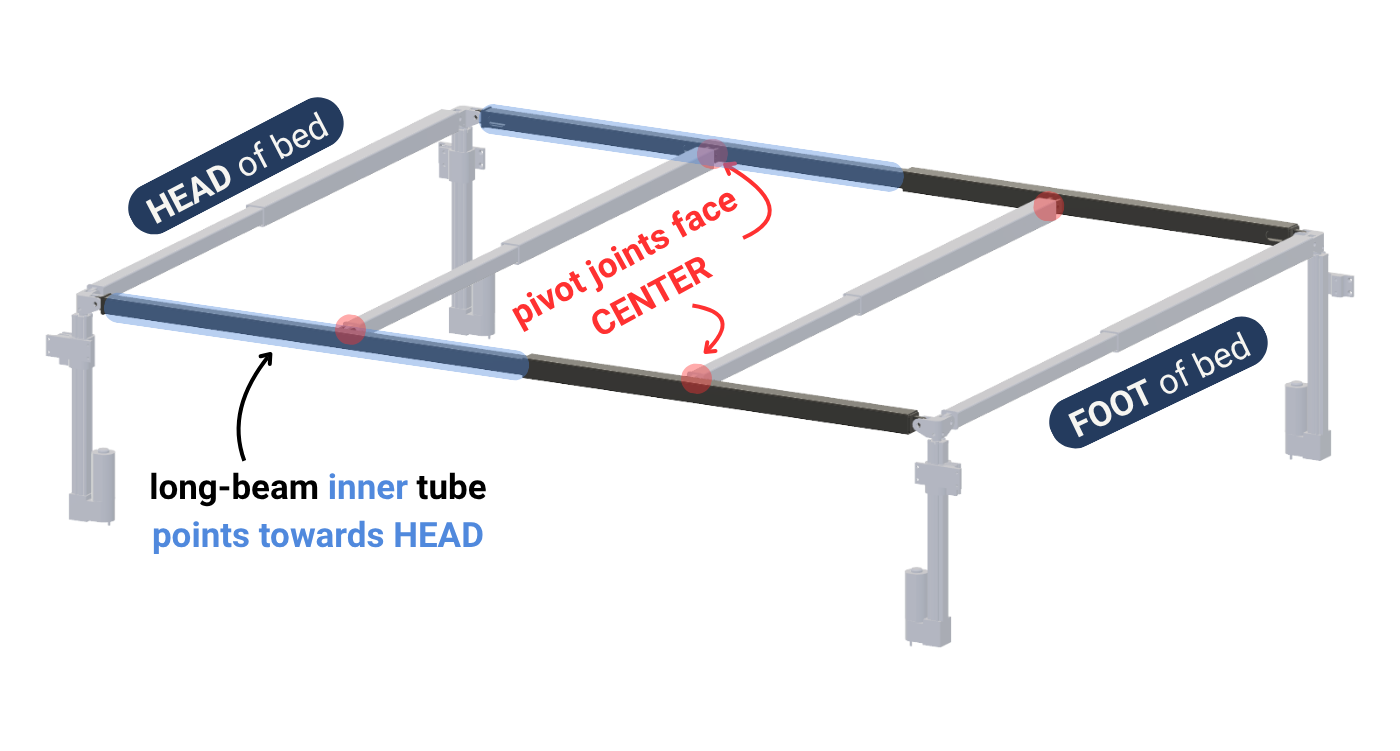
Attach the two long-beam tube assemblies along the sides of the frame to the bi-directional joints using SLIC pins in the orientation shown.
Note: the orientation of the long-beam tube assemblies is based on which side of the bed is the head (where your pillows go!)
The long-beam inner tube must point towards the head of the bed.
If the long-beam inner tubes do not point towards the head of the bed, the wiring will not run smoothly.
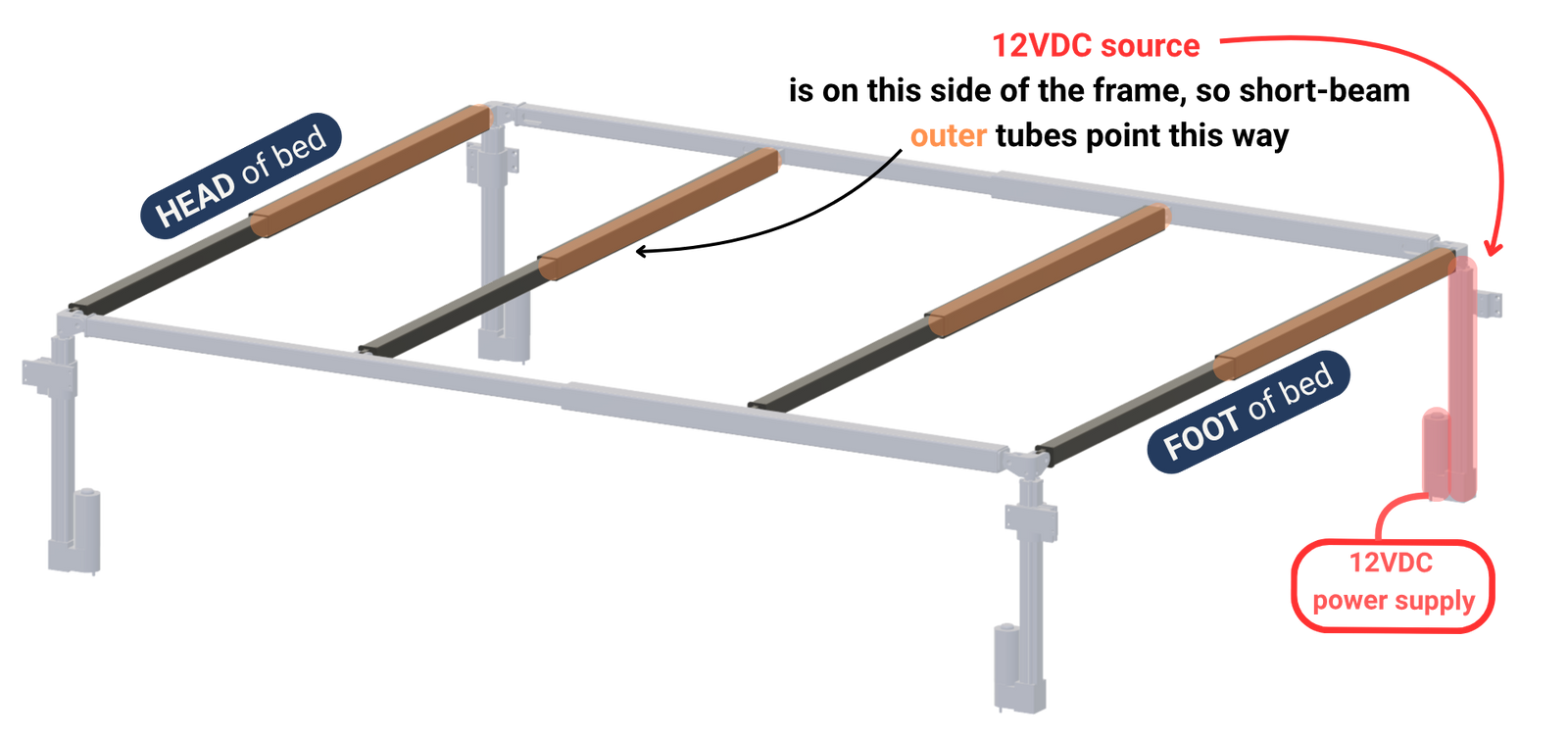
Next, attach the two short-beam tube assemblies across the frame using SLIC pins in the orientation shown.
Note: the orientation of the short-beam tube assemblies is based on where the 12VDC source will come from (usually the corner closest to the DC fuse panel).
The short-beam outer tube must point towards the side of the bed where the 12VDC source will come from.
If the short-beam outer tubes do not point towards the 12VDC source side, the power supply cable can be strained as the bed moves.
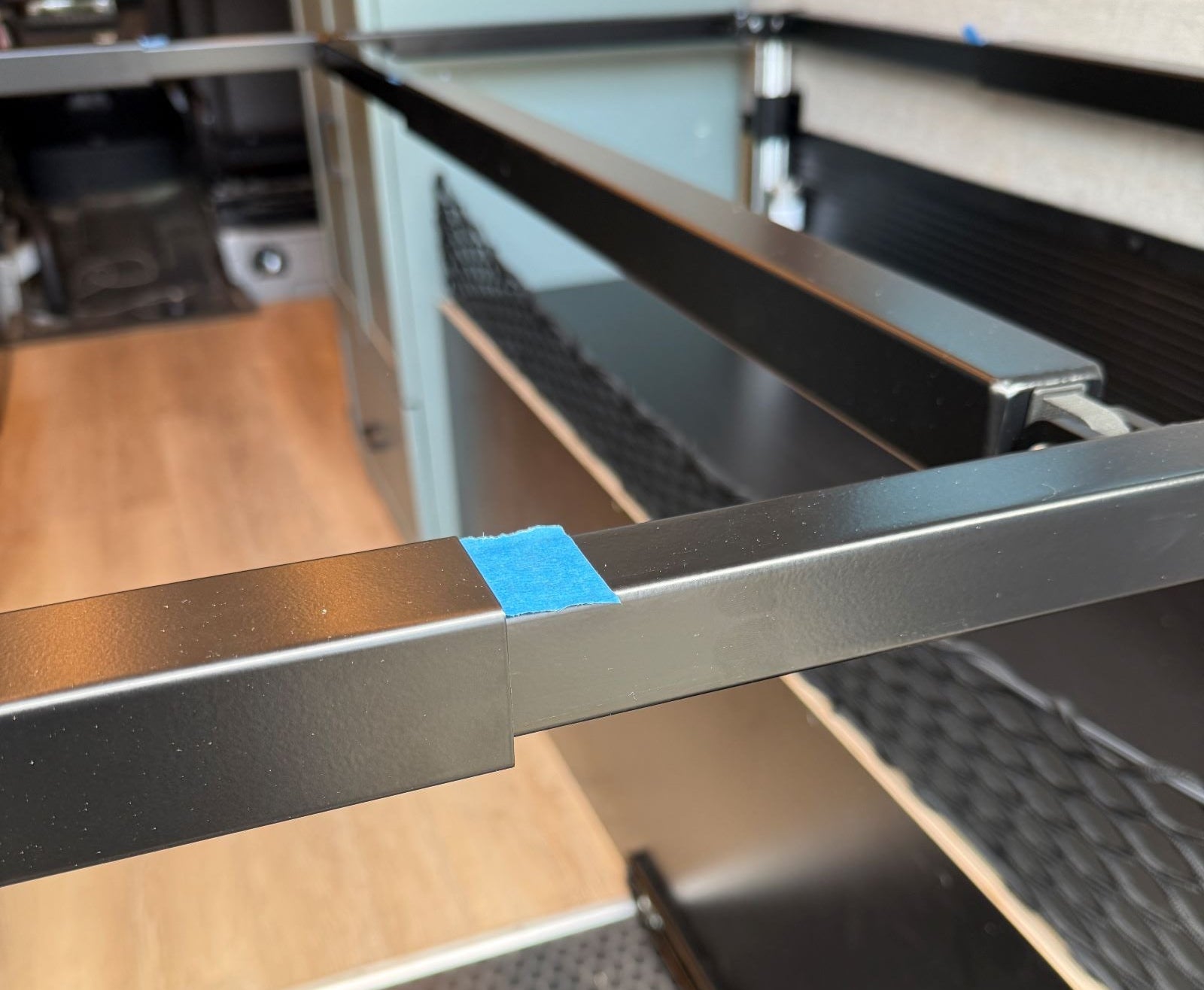
Use a tape that leaves no residue (like blue painter's tape) to mark the locations where the inner tubes meet the outer tubes for all six tube assemblies.
Make sure to mark the location on the smaller inner tubes, not the outer tube.
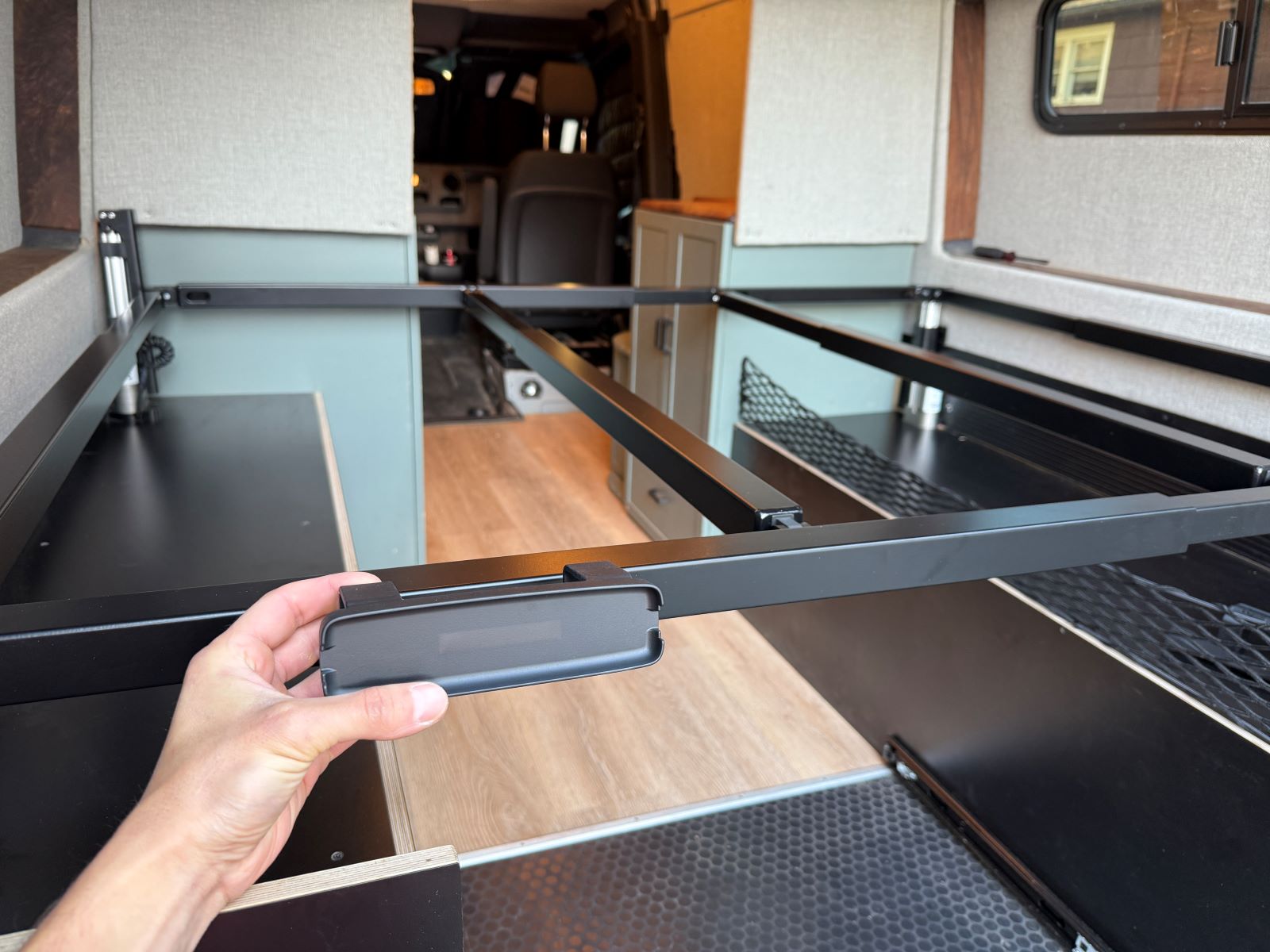
If your kit includes a frame mount for the main controller or an auxiliary controller, decide where you want to install it on the frame and mark that location as well before proceeding.
Installing Glide Tape
Remove the tube assemblies and keep track of their installed locations.
Separate the inner tubes from the outer tubes.
If you are having trouble removing SLIC pins, give them a twist!
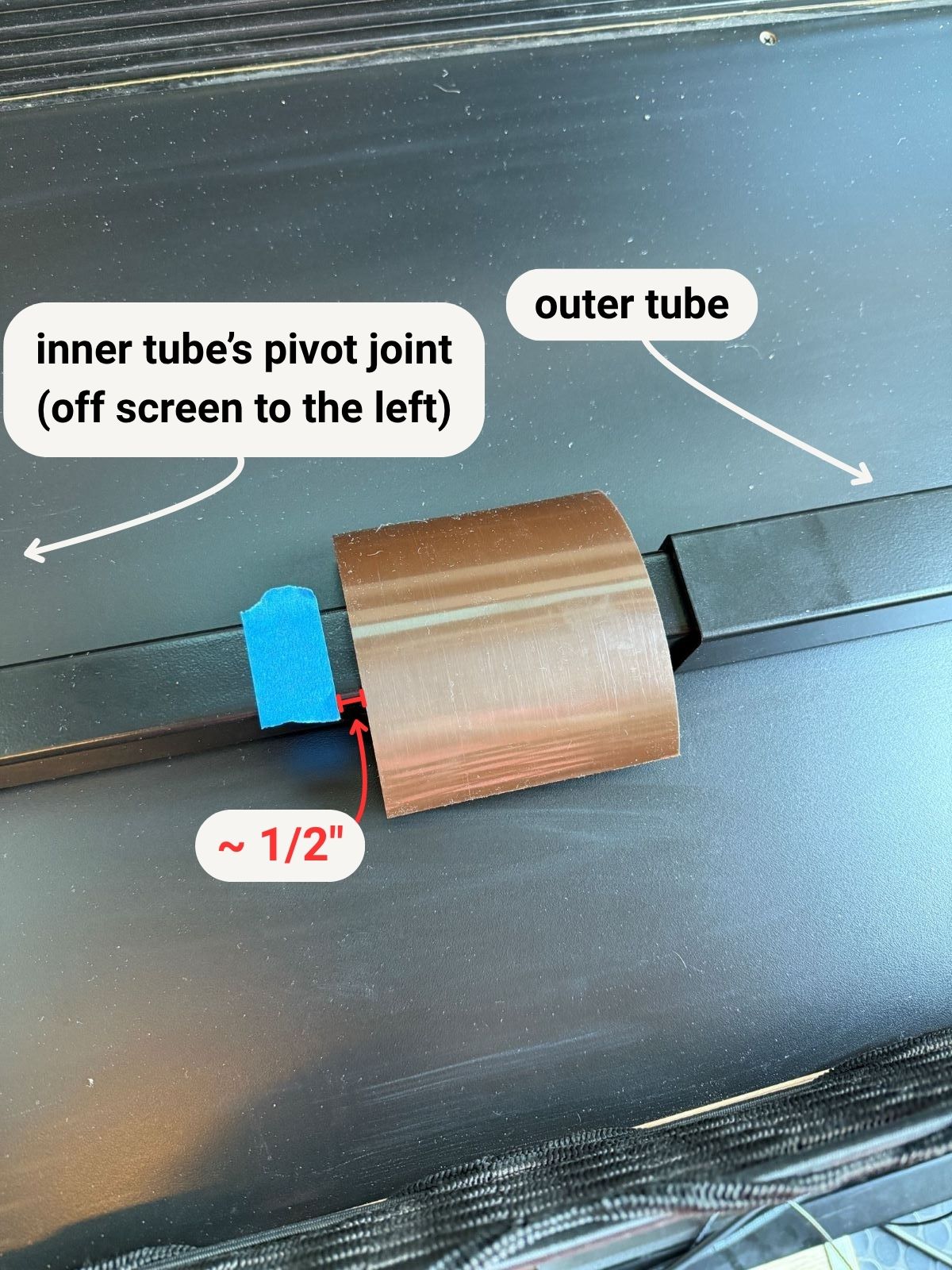
The locations you marked earlier are where the large glide tape pieces will go.
Apply the large glide tape about 1/2" away from the mark, on the side opposite the inner tube's pivot joint (this is the side where the outer tube will slide back on).
This placement ensures the glide tape is fully covered by the outer tube once the frame is reassembled.
The large glide tape must be installed on the correct side of the mark. If placed on the wrong side, the outer tube will not slide over the tape when reassembled.
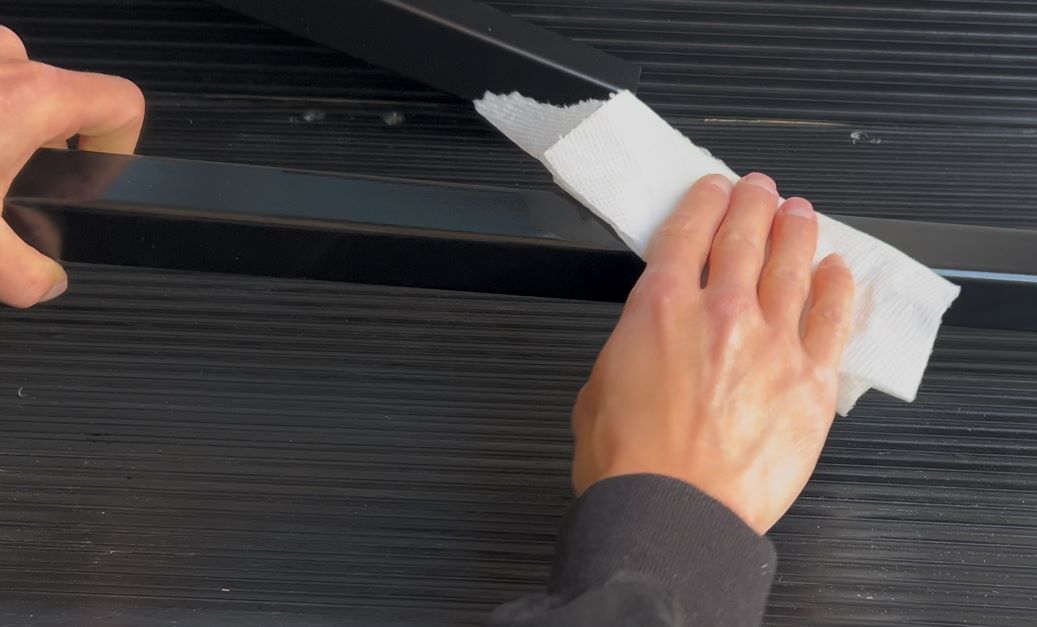
Wipe the area on the inner tube with isopropyl alcohol to remove dirt and grease for best adhesion.
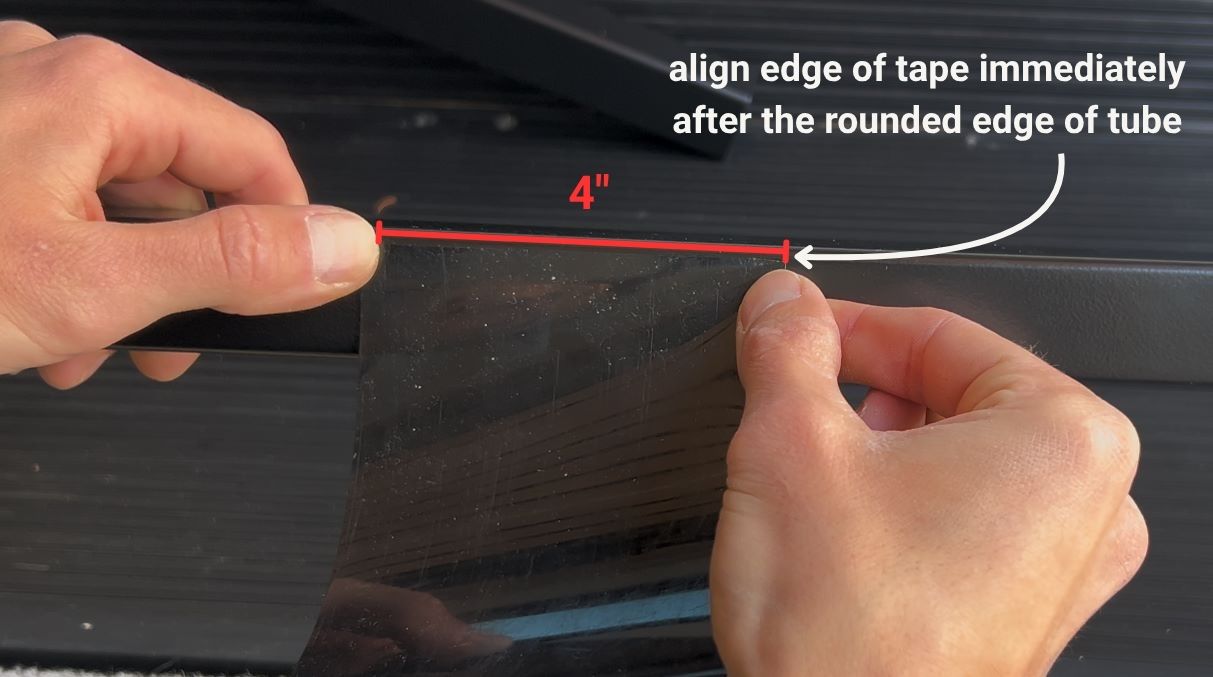
Peel the backing from a piece of large glide tape.
- Align the short edge (4″) of the tape with the point where the rounded corner of the tube flattens out.
- The long edge (4 ¾″) will wrap around the tube.
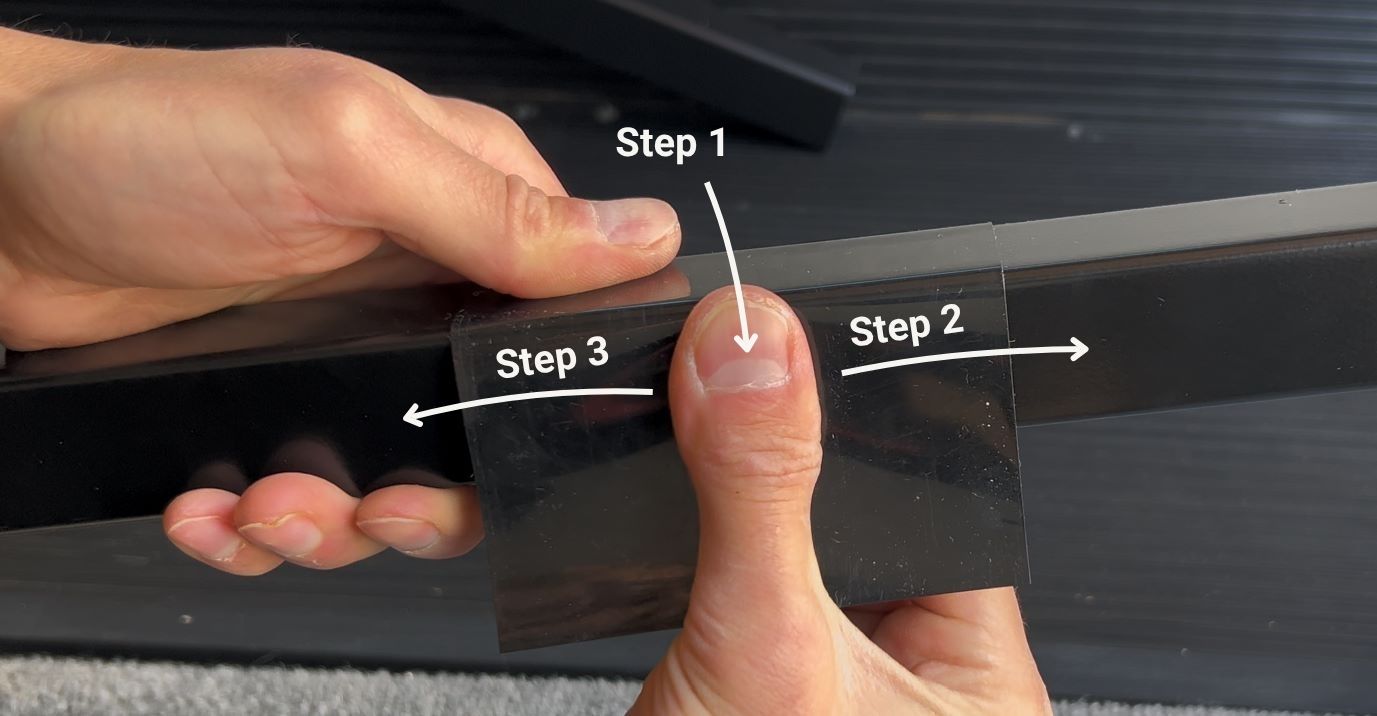
Pull the tape taut and press firmly down the middle. Smooth outward from the center to each edge to push out air bubbles.
Repeat until all sides are secured.
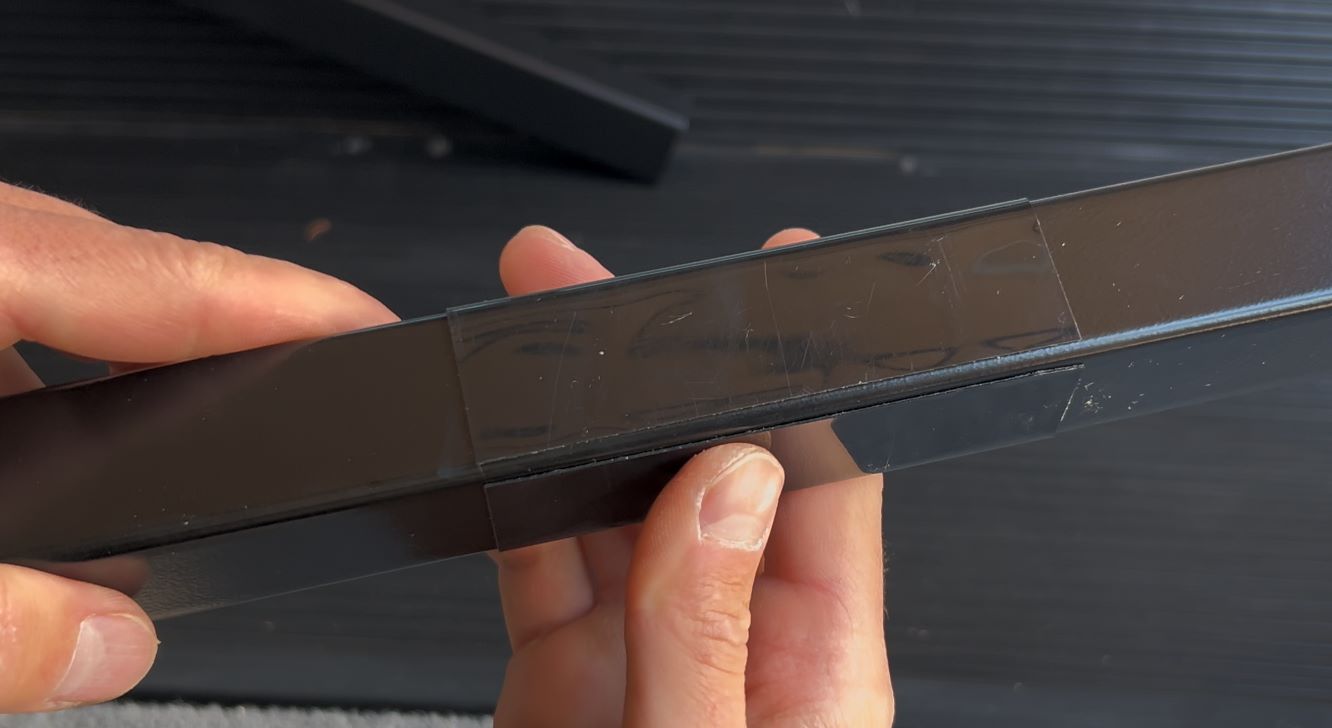
The final corner should look like the image below. Press firmly all over the tape to ensure proper adhesion.
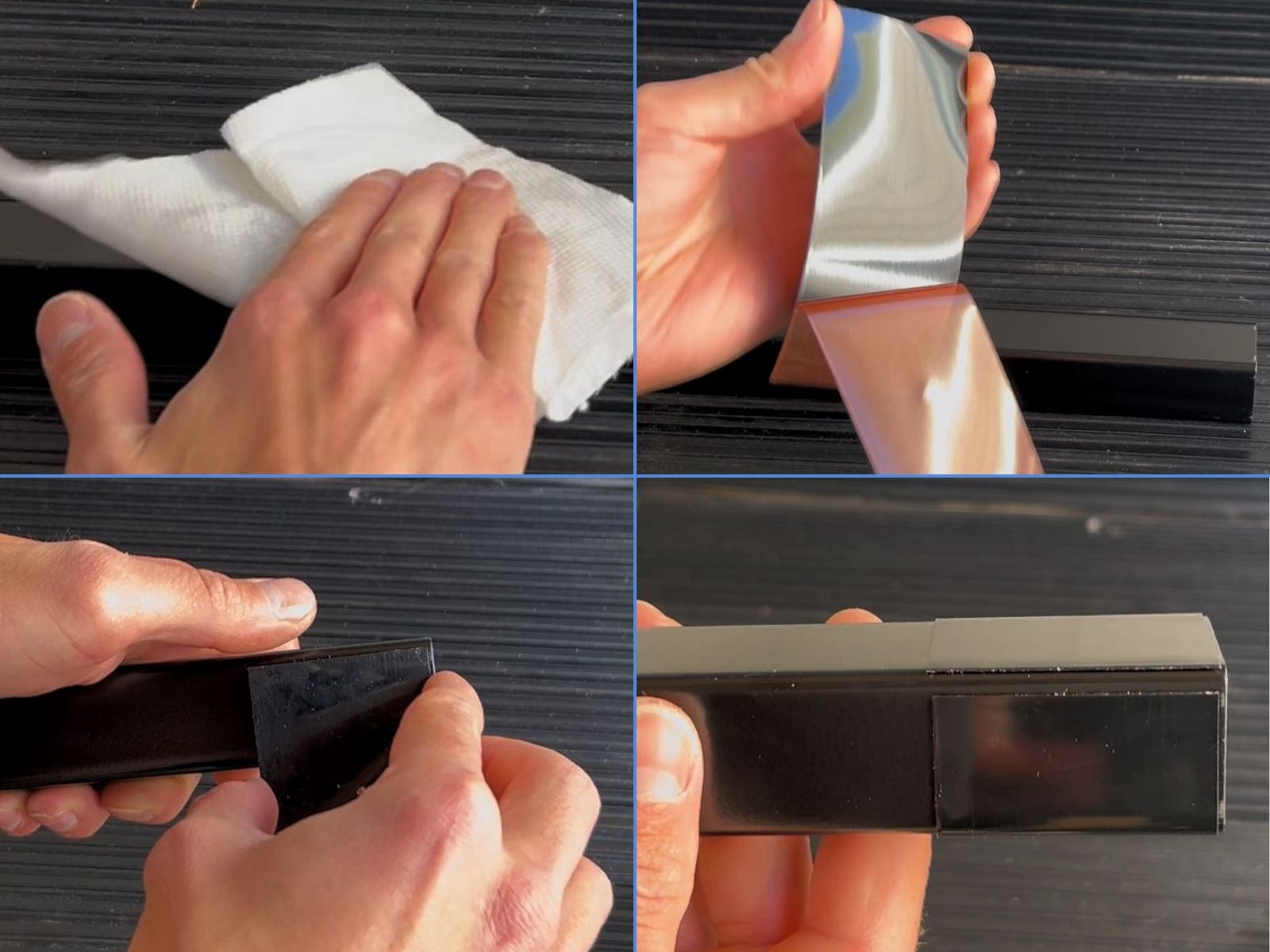
Repeat the same process with small glide tape, placing it on the very end of each inner tube.
Re-Assembling the Frame
If your kit includes a main controller frame mount or an auxiliary controller, slide the mount(s) onto the marked location(s).
Mounts fit directly on the outer tubes. To mount on an inner tube, use two frame mount spacers.
Secure each mount with two 1/4-20 x 1/4" set screws until snug.
Tightening beyond snug may crack the mount case. Only tighten enough so the mount does not move.
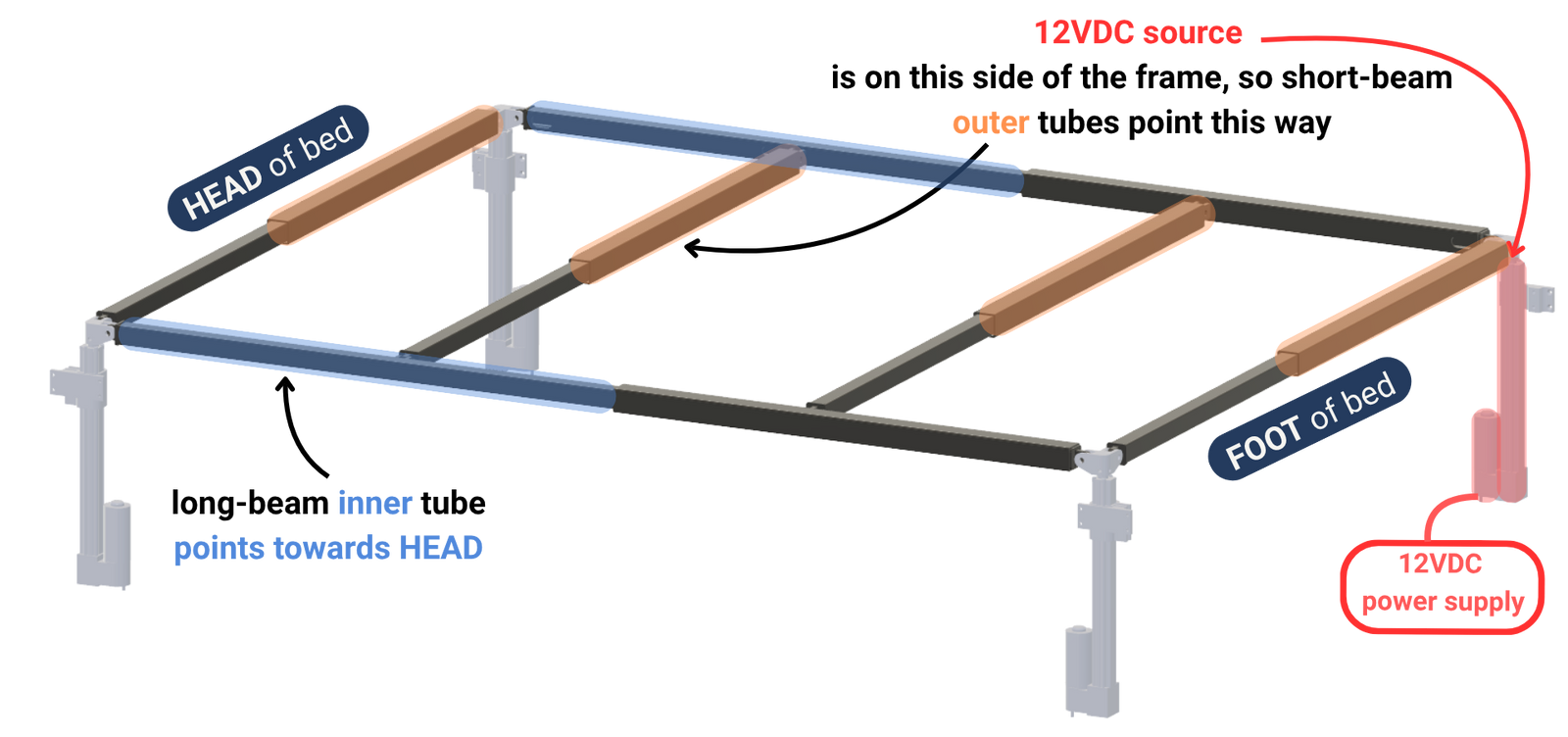
Reinstall the tubes in the same orientation as before the glide tape was applied:
- Long-beam inner tubes -- point toward the HEAD of the bed
- Short-beam outer tubes -- point toward side of bed with the 12V power source
Mounting the Power Board
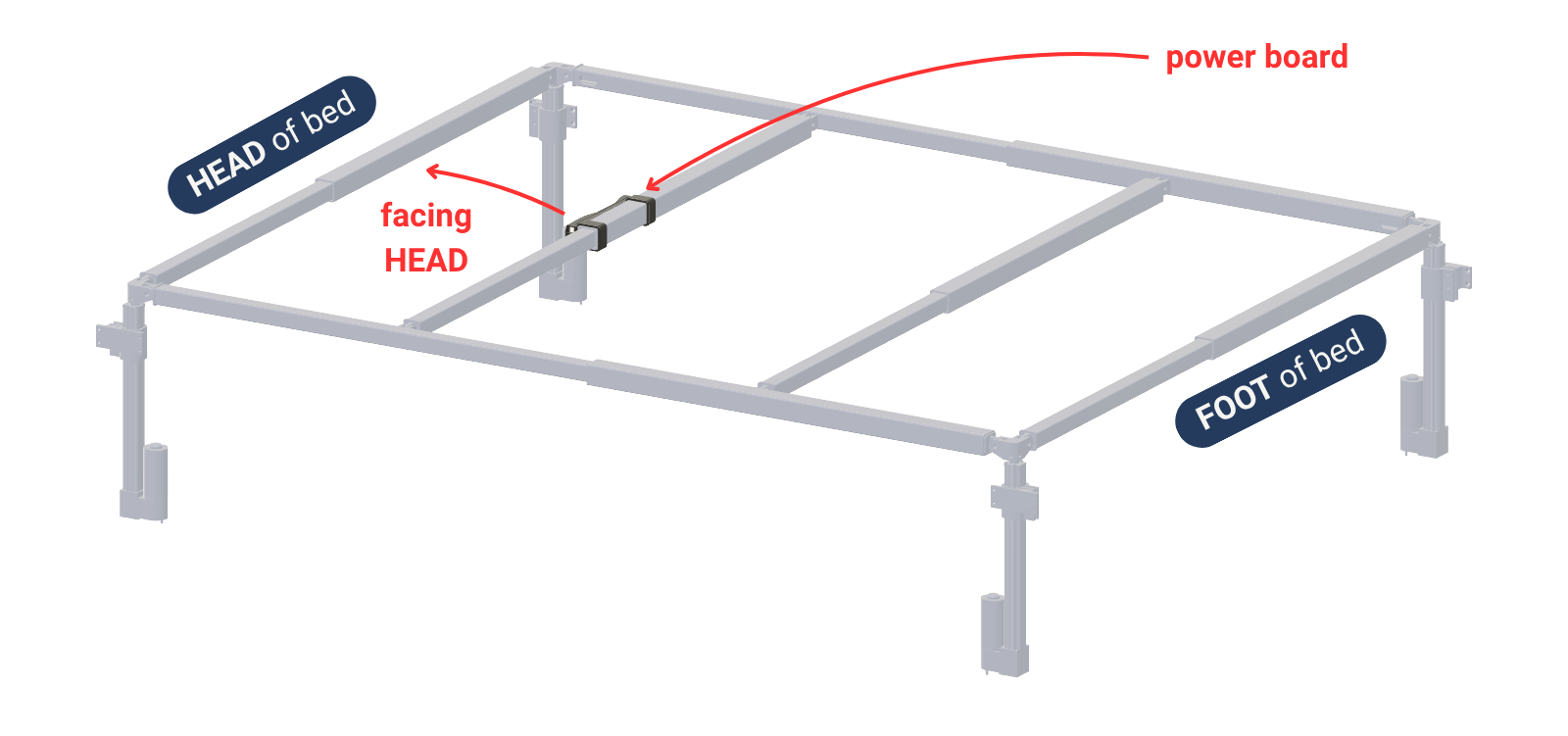
Slide the power board onto the short outer tube closest to the HEAD of the bed, with the board facing the HEAD.
If installed in the wrong location or orientation, the controls will be reversed and wiring will not fit correctly.
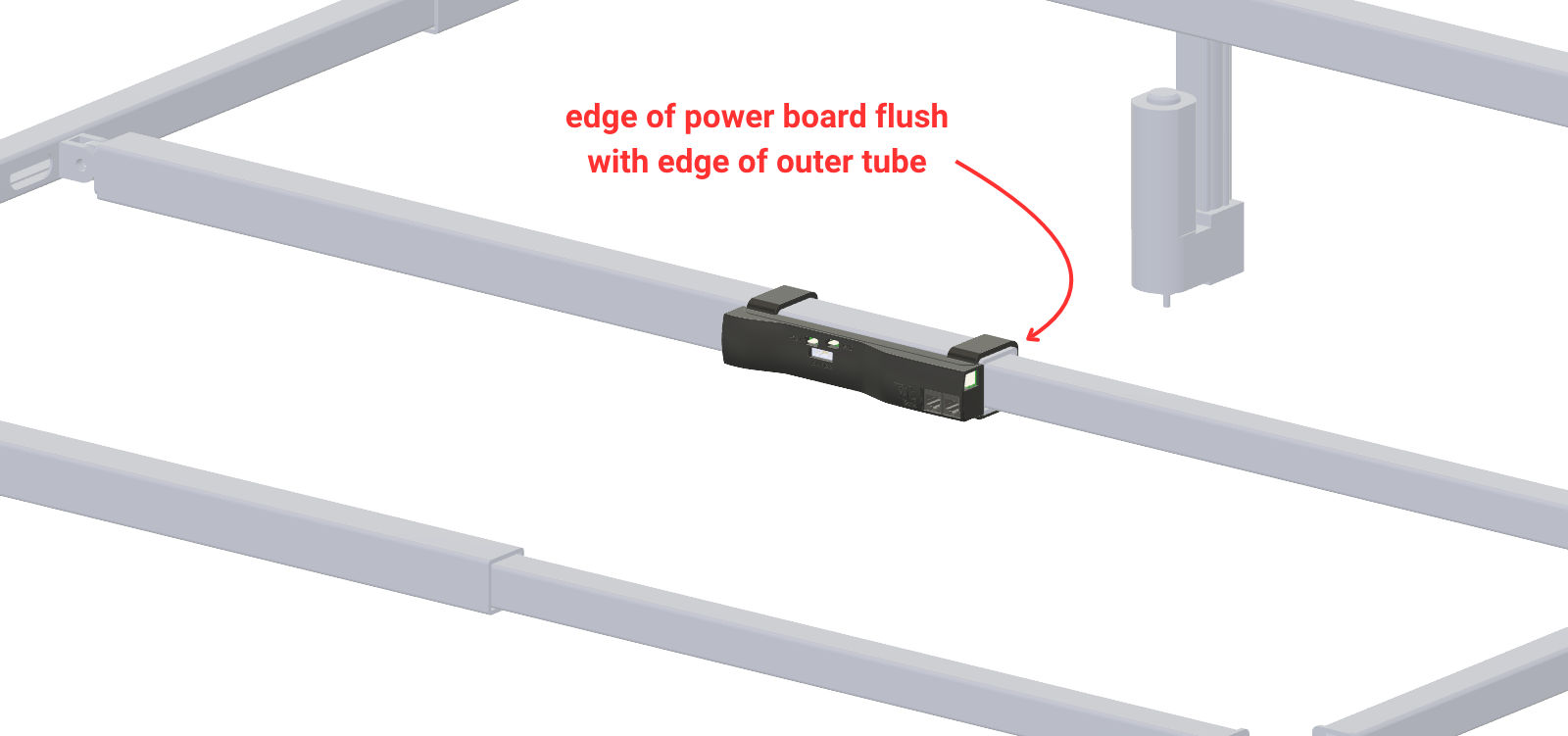
Position the power board so it is flush with the edge of the outer tube (see diagram).
Secure in place with two 1/4-20 x 1/4" set screws until snug.
Tightening beyond snug may crack the mount case. Only tighten enough so the mount does not move.
Placing Rubber Spacers
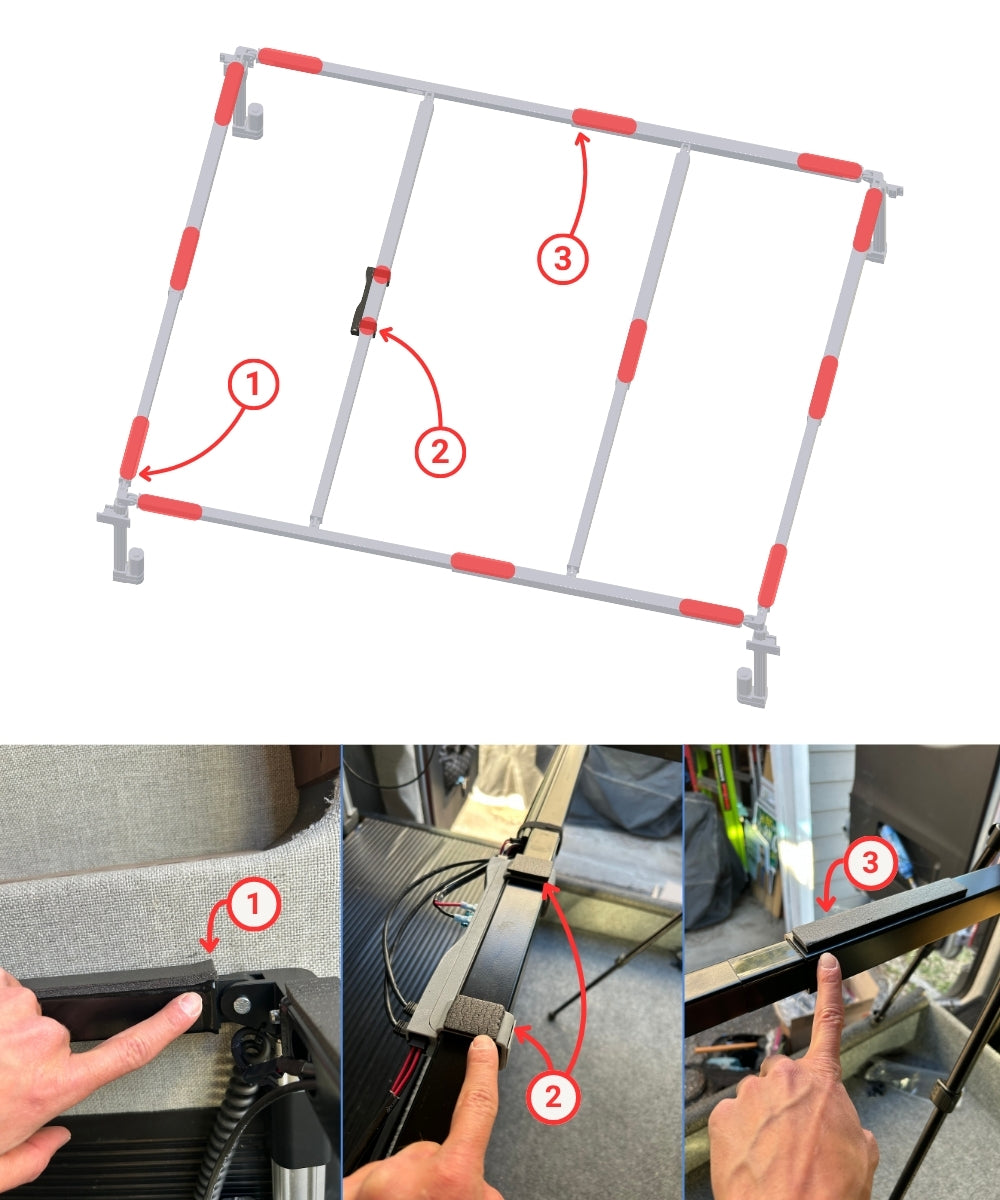
Install the adhesive-backed rubber spacers in the 14 red-marked locations. These strips prevent squeaking and protect the tubes from the wooden platform.
⚠️ Important: Some locations require extra care. Follow the placement rules below:
- Ends of Inner Tubes – Place the strip so it covers the raised pivot joint. (See location 1)
- Frame-Mounted Electronics (power board or controller) – Cut one spacer into two shorter pieces and place them on top of the frame mount. (See location 2)
- Centers of Tube Assemblies – Place the strip only on the larger outer tube. (See location 3)
With the frame fully assembled and any electronics in place, you are ready to begin wiring.
Section 3: Wiring
Understanding the Wiring Diagram
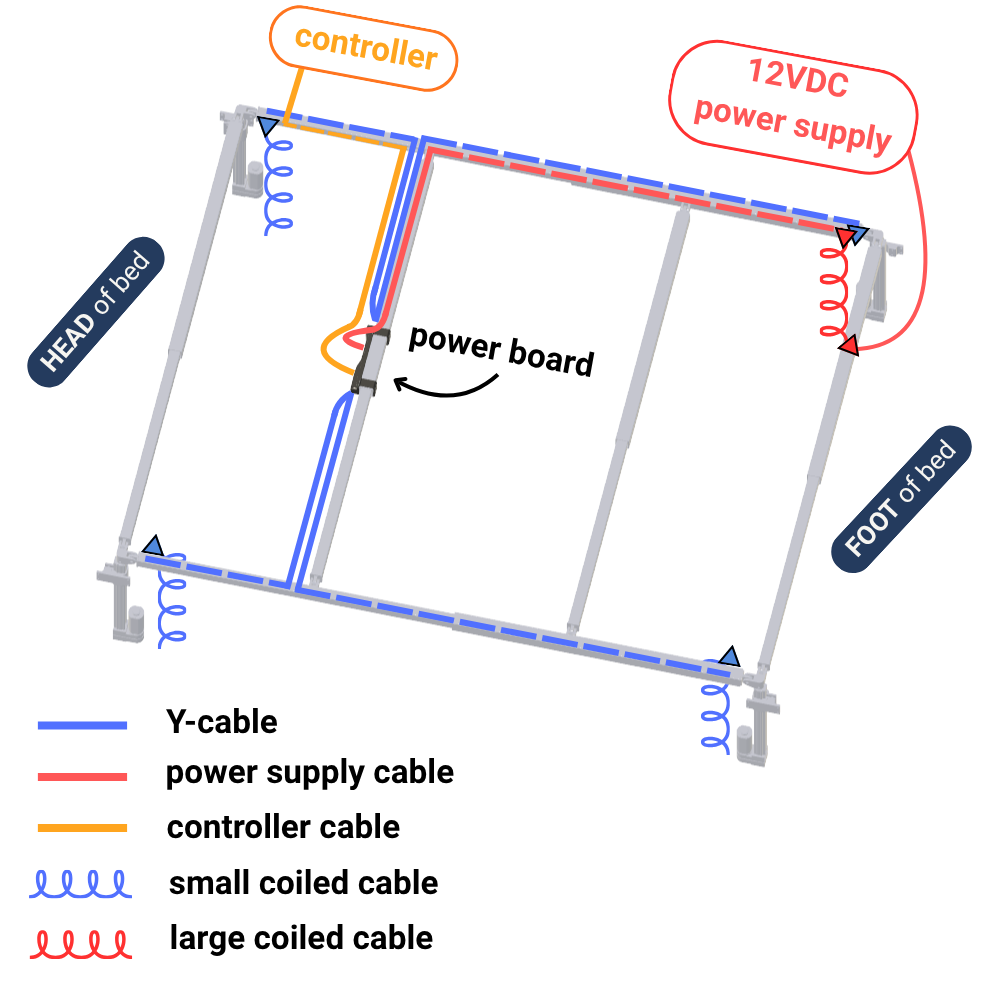
The wiring diagram shows one example. Your setup may differ depending on where your power supply and controller are located. Run cables to match your specific layout.
Running the Wiring
🔌When pulling cables through the frame, you will notice extra wire at each corner. This is expected and will be cleaned up in a later step.
Power Supply
1. Connect the large coiled cable (image) to the long power supply cable (image) at the actuator that will serve as your 12VDC input.
2. Run the long power supply cable through the frame to the power board.
3. Cut to length, leaving about 2″ of slack.
4. Strip the ends, crimp on the blue spade connectors, and plug into the power board (red = +12V, black = GND).
5. Connect the short power supply cable (image) to the base of the large coiled cable and run to your 12VDC source - but leave de-energized.
⚠️ Do Not Connect to Power Yet
Y-Cables
1. Each Y-cable (image) has a short leg and a long leg. Run each leg to the appropriate actuator.
- Short leg → closest actuator (near head of bed).
- Long leg → far actuator (toward foot of bed).
2. Repeat for both sides of the bed.
3. Connect the short legs and long legs to the actuators via the small coiled cables (image).
4. Plug the Y-cables into the power board 4-pin connectors.
Controller Cable
1. Connect the controller cable (image) to the power board.
2. Run the controller cable to your controller location.
3. If your kit included an auxiliary controller, run the second controller cable to your auxiliary controller location.
Securing the Wiring
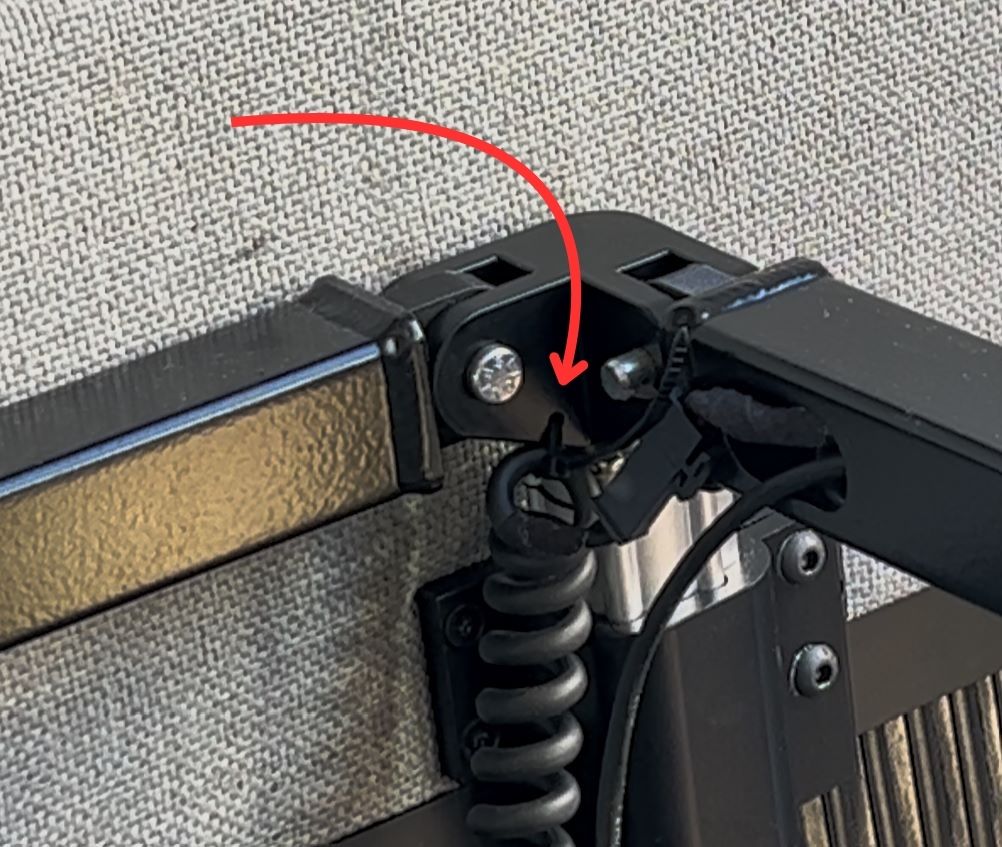
Upper strain relief: Use zip-ties through the holes in each bi-directional joint to secure the top of every coiled cable.
It is important to place the zip-tie below the quick connect so the actuator can extend without stressing the connection.
Lower strain relief: Use zip-tie anchors to secure the lower ends of every coiled cable to the wall.
It is important to place the zip-tie above the lower quick connect so the actuator can extend without stressing the connection.
Ensure the coiled cable is FULLY RETRACTED when the lower end is secured in place.
Powering On
Before securing the wiring, one side of the bed needs to be raised to its maximum height to maximize the wiring distance from the power board to the actuators.
Double check all the connections are secure before applying 12VDC to the short power supply cable.
Before applying 12VDC power to the Tilt Bed:
- Supply must be regulated 12VDC only (not 24V or 48V).
- Power input must be fused at the source (recommended 15A).
- Confirm polarity: red = +12V, black = ground.
- Ensure wiring is sized correctly and installed safely.
Tilt Bed Systems, LLC is not responsible for damage caused by incorrect wiring or faulty vehicle electrical systems.
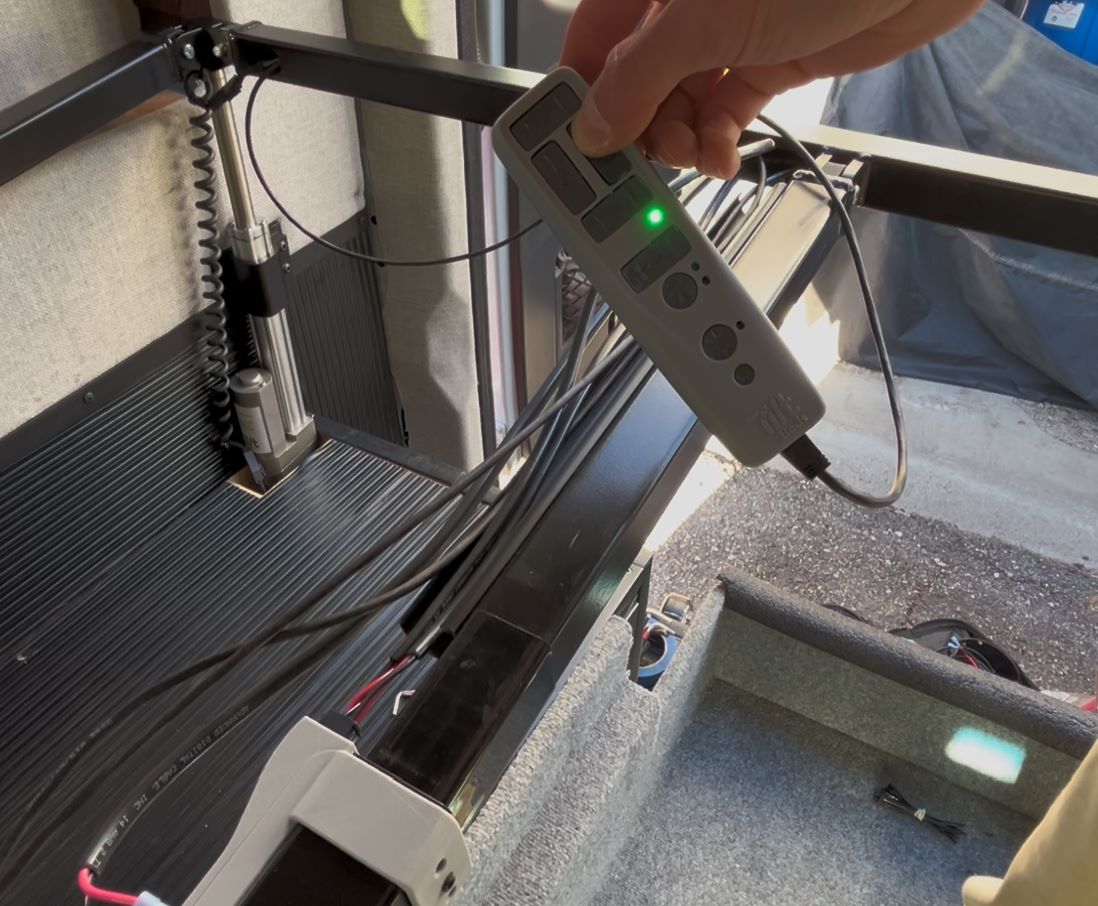
⚡Connect 12VDC to the short power supply cable.
Press the reset button on the controller to establish a connection.
Ensure the area is clear and raise one side of the bed to it's maximum height.
The bed frame will widen as it lifts - this is what allows the Tilt Bed to work!
Hit the Reset button (closest to the Tilt logo) on the controller.
Managing Excess Wire
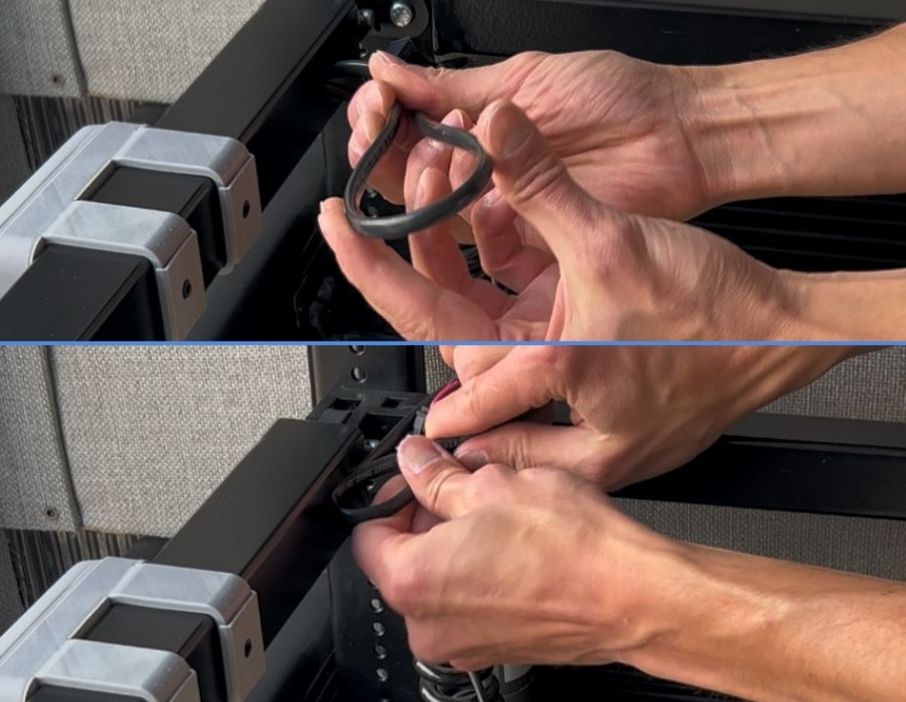
Gently bend extra cable (do not crease) and tuck it inside the frame.
Leave some excess controller cable for removing the controller from the mount.
Spinning the controller towards you before placing in the mount can cause the excess controller cable to naturally move up and out of the way.
Inner Tube Wiring Conduit
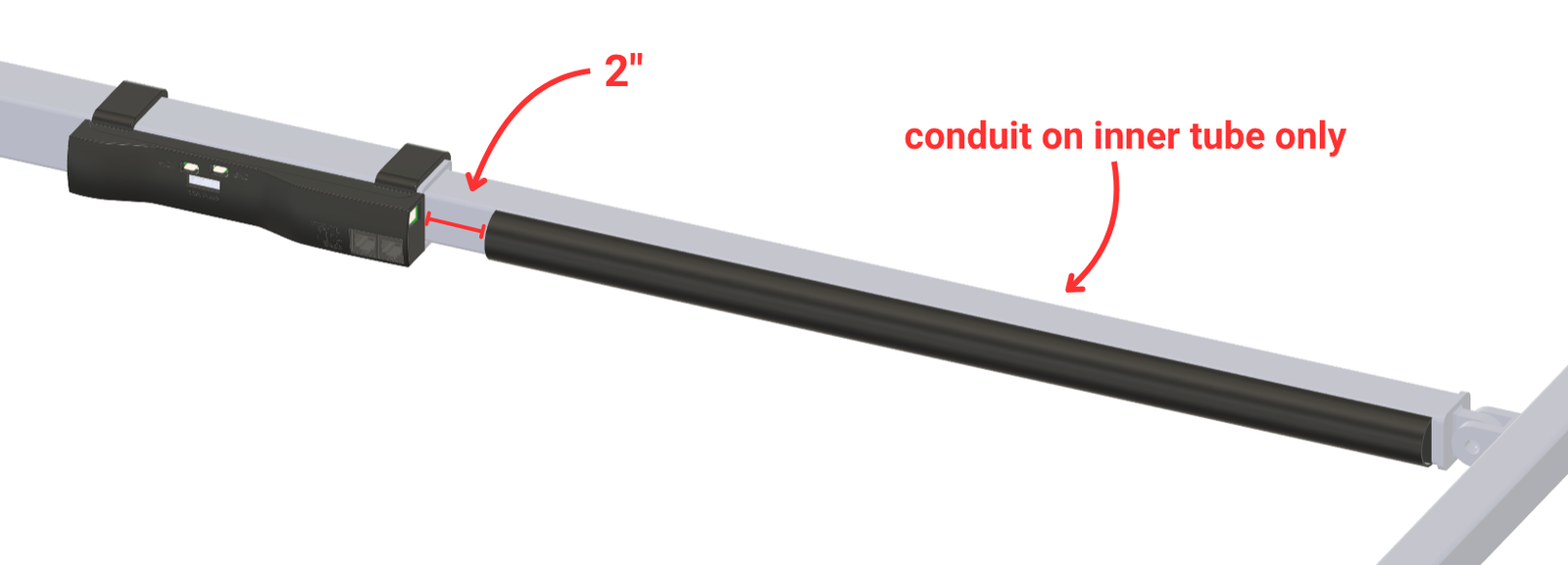
1. Measure the distance from the edge of the power board to the nearest wire entry hole on the inner tube only (outer tube conduit will be installed later).
- Subtract 4″. This gives you a length that leaves a 2″ gap at both ends.
2. Cut the wire conduit to this length.
3. Clean the tube with isopropyl alcohol.
4. Peel off the backing and stick the conduit in place. Make sure the conduit latch faces up.
5. Enclose the cables in the conduit.
6. If the conduit won't stay closed due to cable bulk, secure with Velcro cable ties at each end.
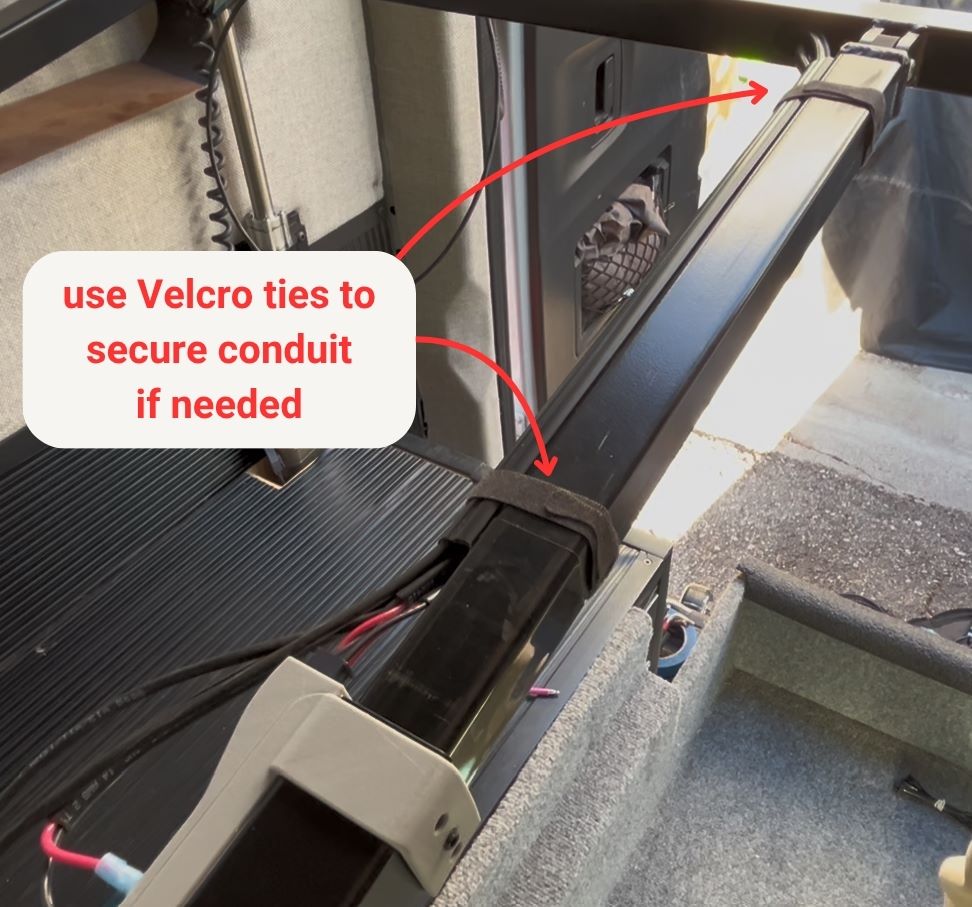
Secure Linear Rails (if applicable)

If your system includes linear guide rails, you can now secure the top of the rail.
Raise the actuators with linear guides so the bi-directional joint is just below the top mounting hole. This aligns the linear guide rail with the actuator. Then install a single #8 x 1" wood screw to secure in place.
With the bed wiring connected and tucked away (besides the final conduit piece), you are ready to build the platform.
Section 4: Sleeping Platform
Platform Guidelines
- Use ¾″ plywood for strength and rigidity.
- The platform may overhang the frame to:
- Support the mattress into flares.
- Maximize mattress area (e.g., extending all the way to rear doors).
- The platform must cover all frame tubes for proper support.
Platform Types
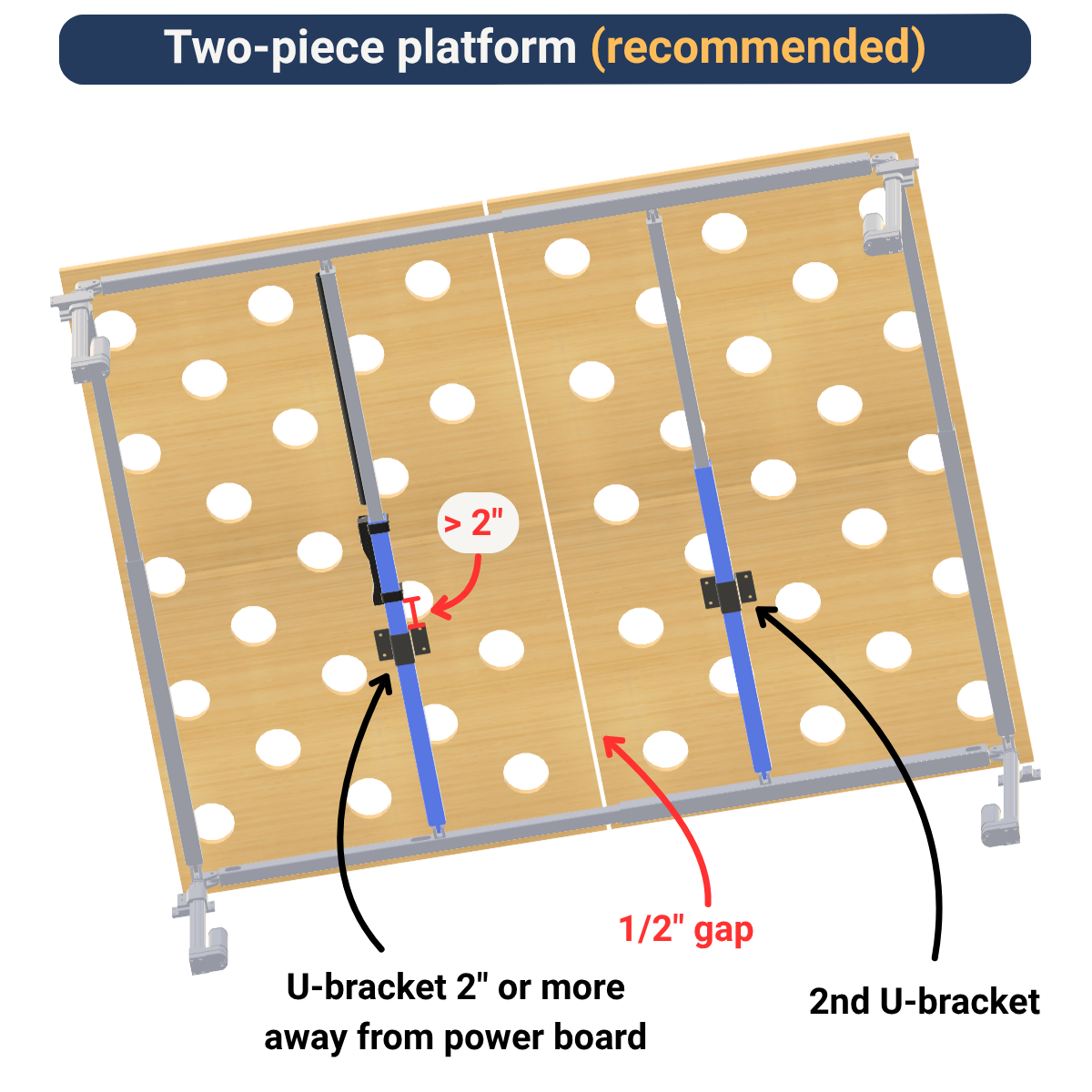
Two-piece platform (recommended)
- Leave a ½″ gap between the two panels.
- Install two U-brackets: one on each short-beam outer tube spanning the middle of the bed.
- The U-bracket nearest the power board must be at least 2″ away from the edge of the board, or wiring may be difficult to connect/disconnect. Leaving too much of a gap will result in more visible wiring before it enters the cable conduit.
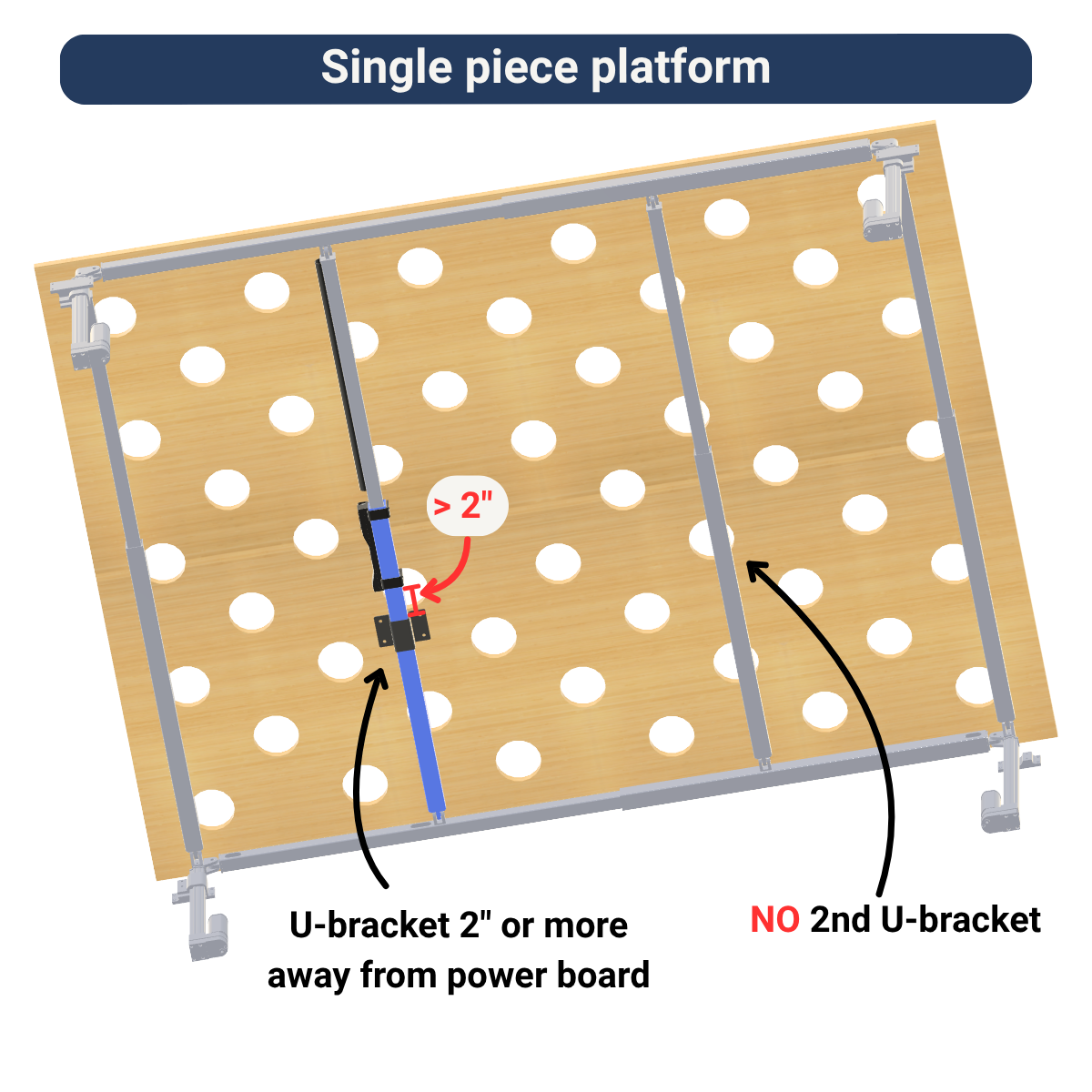
Single piece platform
- Install only one U-bracket (on the short-beam outer tube with the power board).
⚠️ Installing two U-brackets on a single panel will cause the frame to bind when leveling.
- Keep the U-bracket at least 2″ from the power board edge for wiring clearance.
Securing U-Brackets
1. With the platforms and U-bracket(s) in place, mark the hole locations.
2. Remove platforms and drill 5/16" holes in the marked locations. Clamp a piece of scrap wood on the opposite side to prevent tear-out when drilling.
3. Hammer or press in 1/4-20 x 9/16" pronged tee-nuts with the flange on the mattress side.
4. Replace the platforms onto the frame.
4. Secure platform(s) to the U-brackets with 1/4-20 x 3/4" button head cap screws.
Outer Tube Wiring Conduit

1. Measure the distance from the edge of the U-bracket to the nearest wire entry hole.
- Subtract 4″. This gives you a length that leaves a 2″ gap at both ends.
2. Cut the wire conduit to length.
3. Clean the tube with isopropyl alcohol.
4. Peel off the backing and stick the conduit in place. Make sure the conduit latch faces up.
5. Enclose the cables in the conduit.
6. If the conduit won't stay closed due to cable bulk, secure with Velcro cable ties at each end.

Bed installation complete! ✅
Throw a mattress on the platform, level your bed, and take a nap - you've earned it!
For instructions on how to use the controller and how to adjust settings like collision detection sensitivity and auto-level set point, check out the User Manual webpage.
If you have any questions, issues, concerns, or feedback - please send us an email at support@tiltbedsystems.com!
